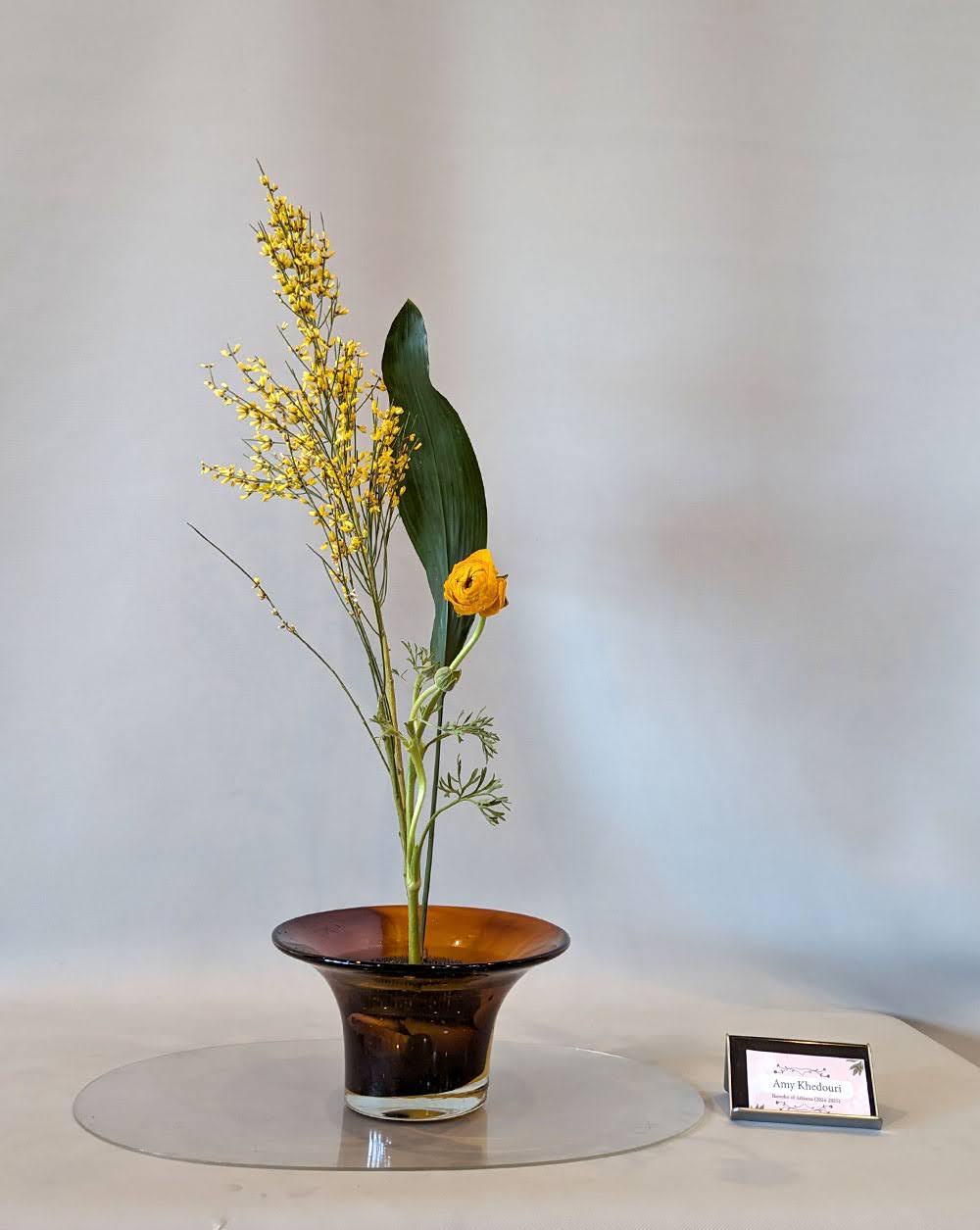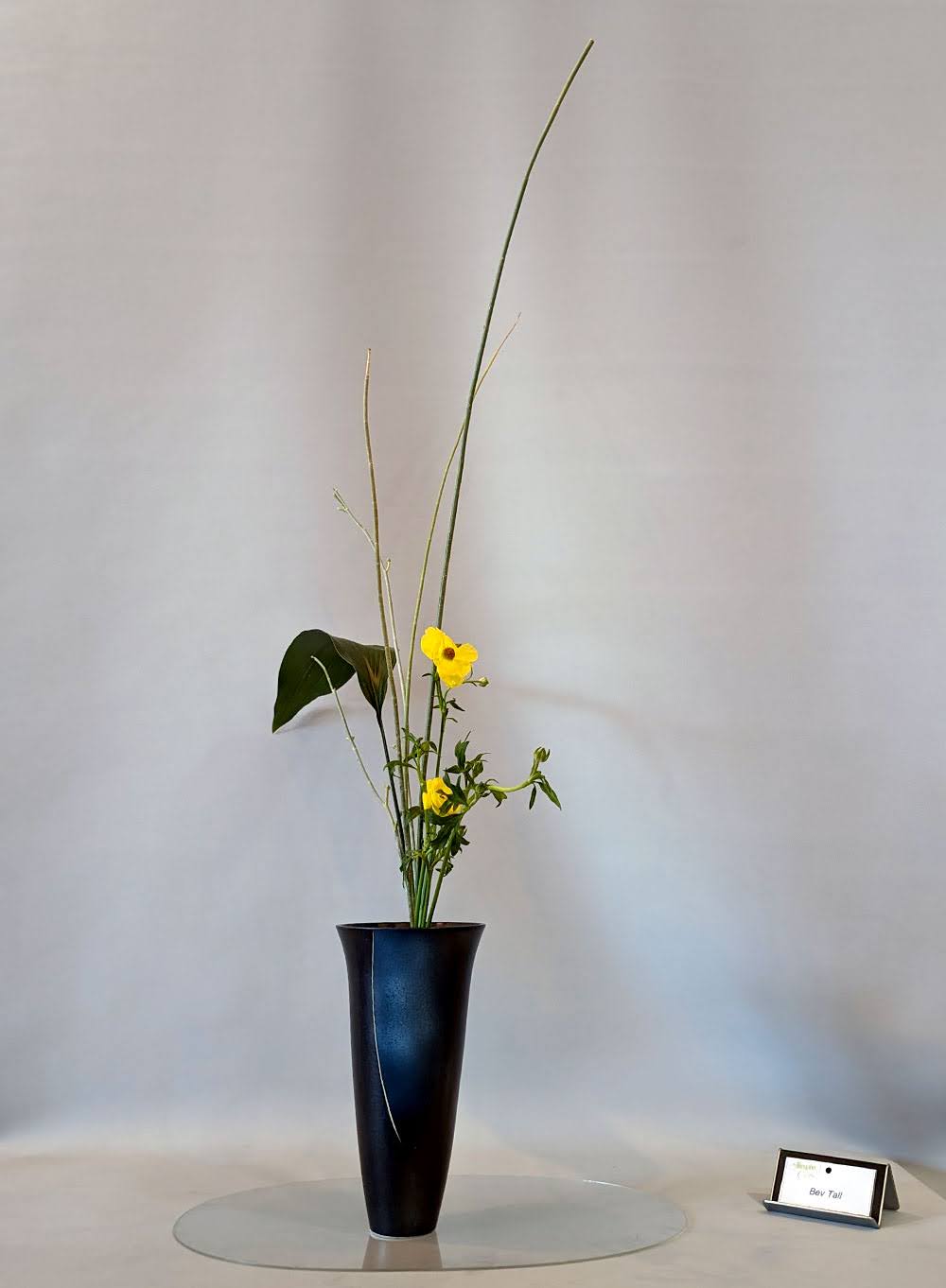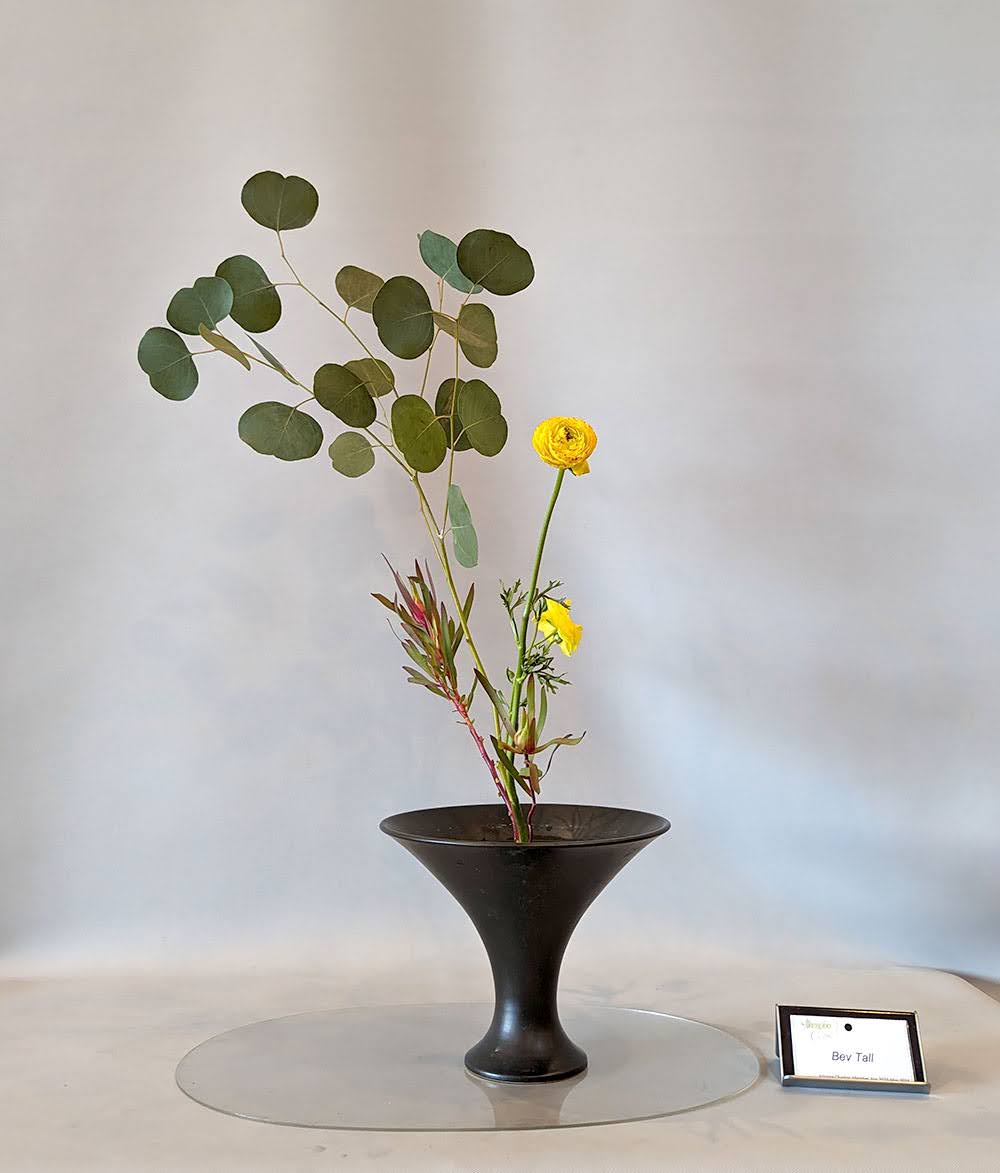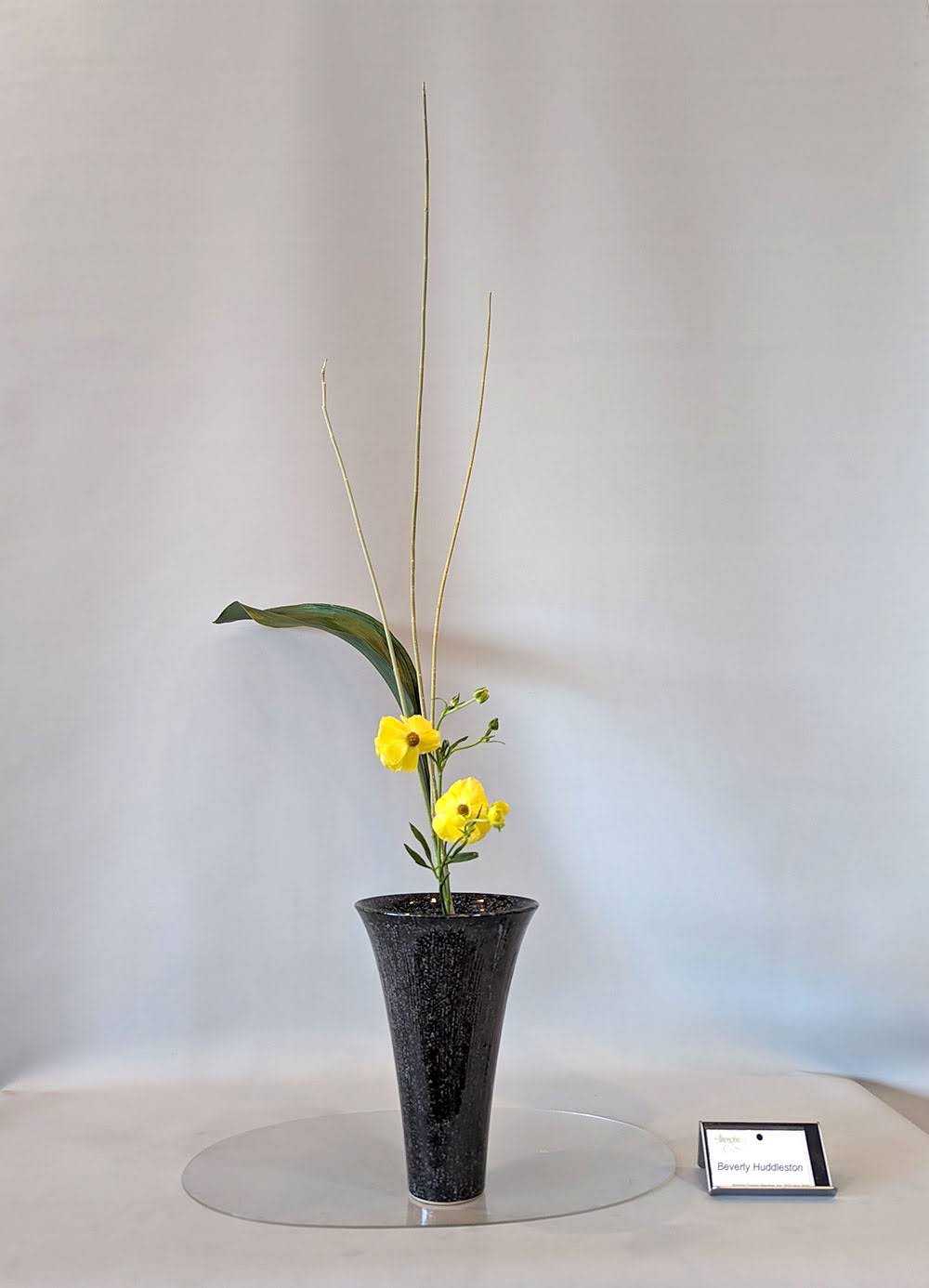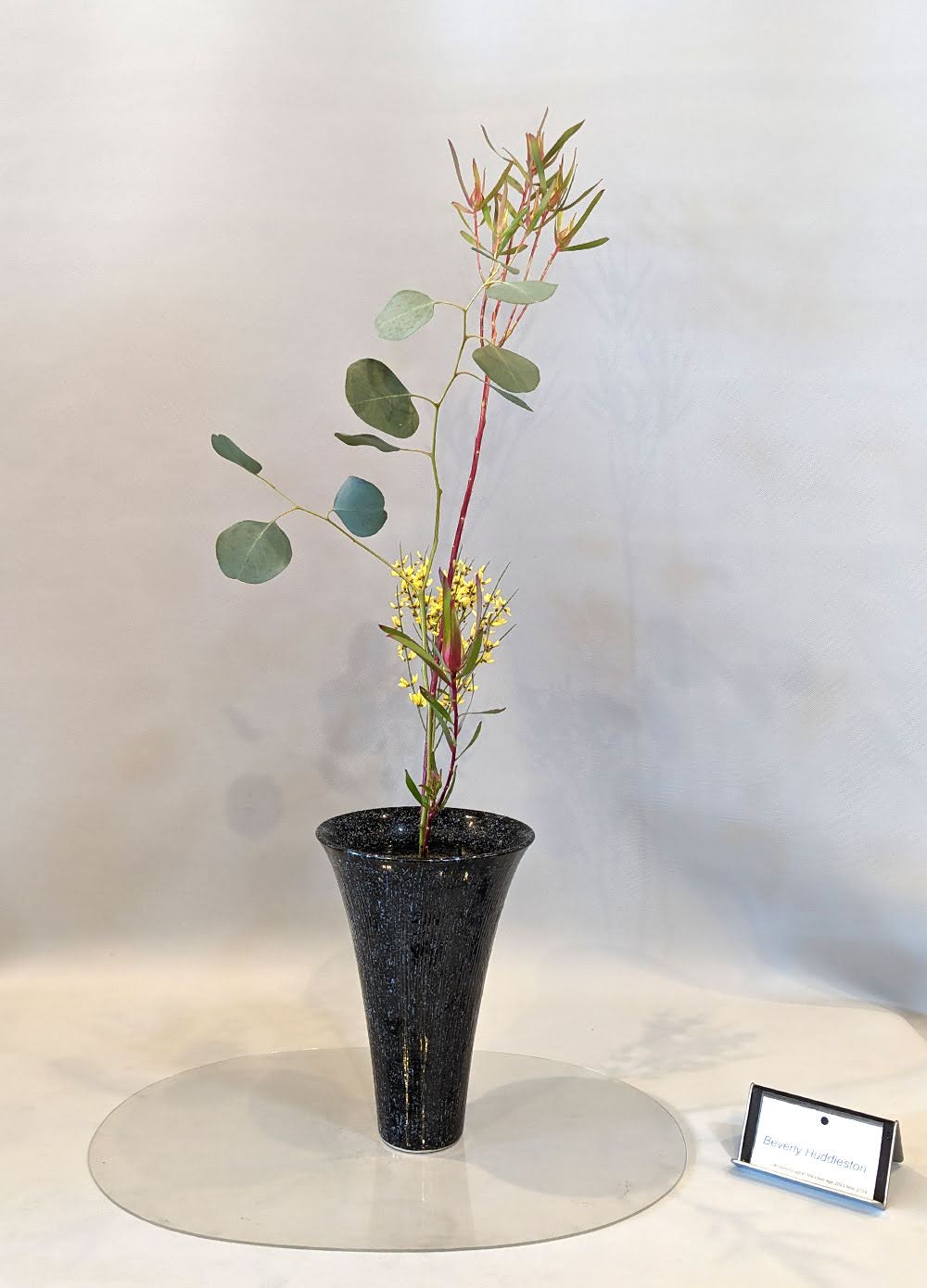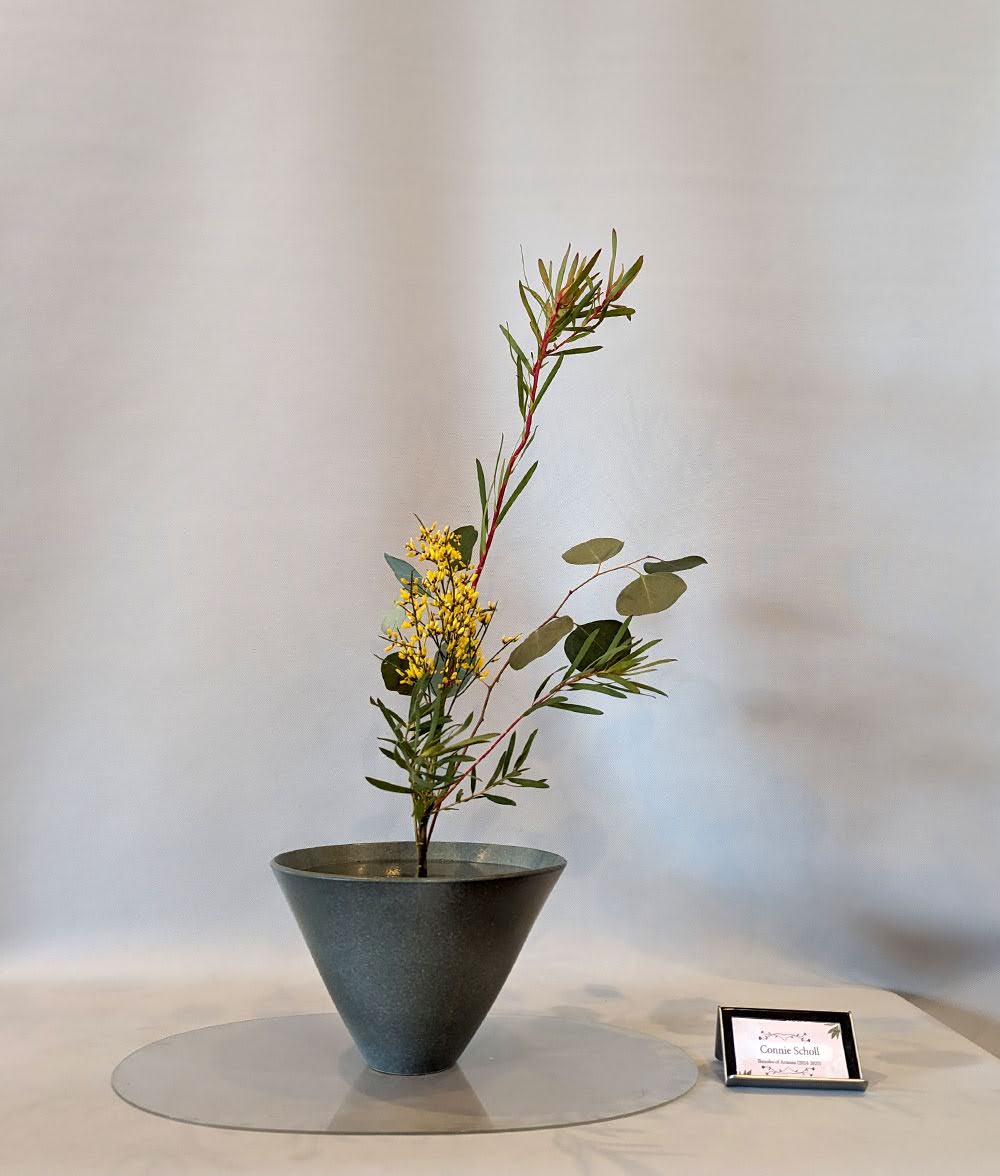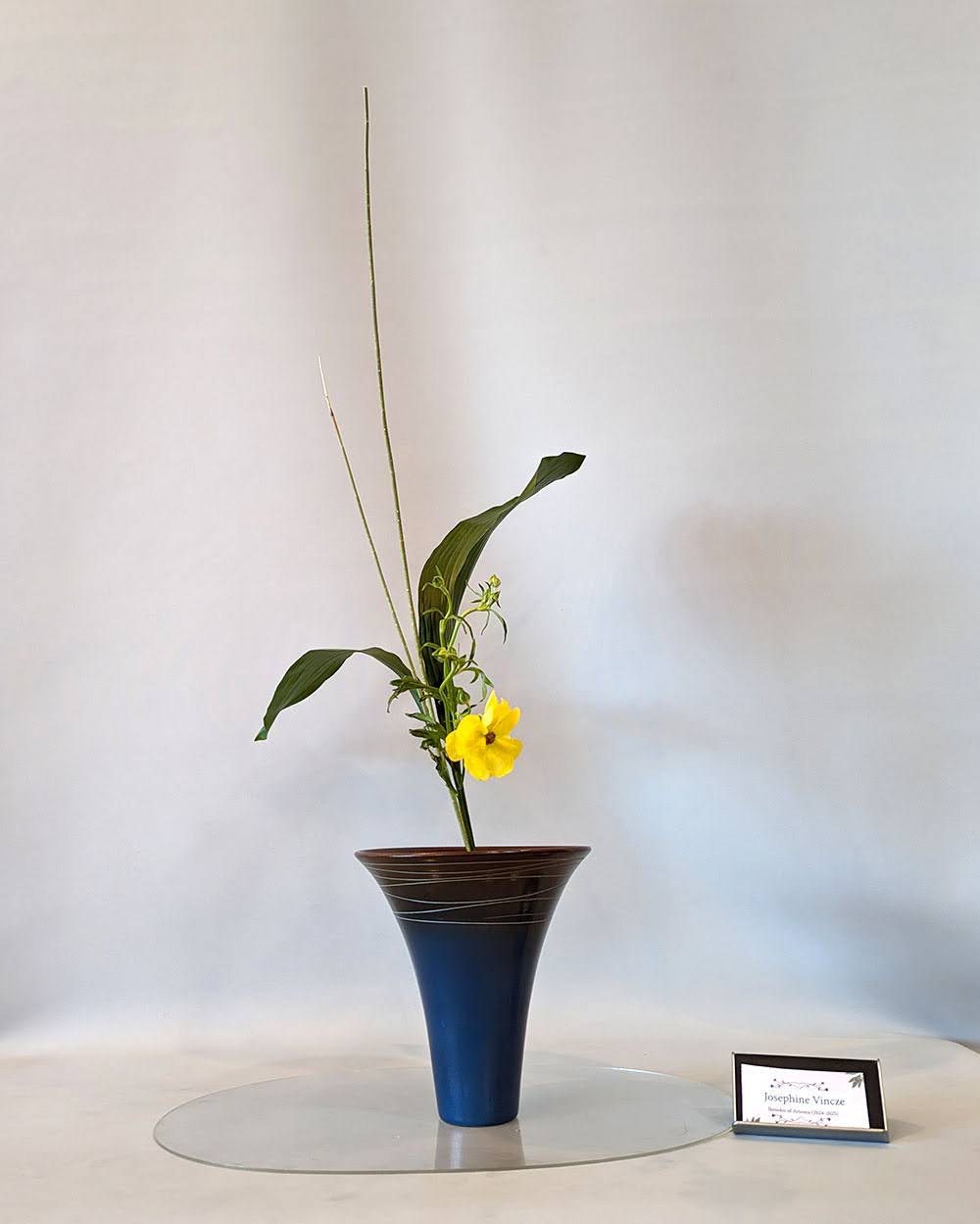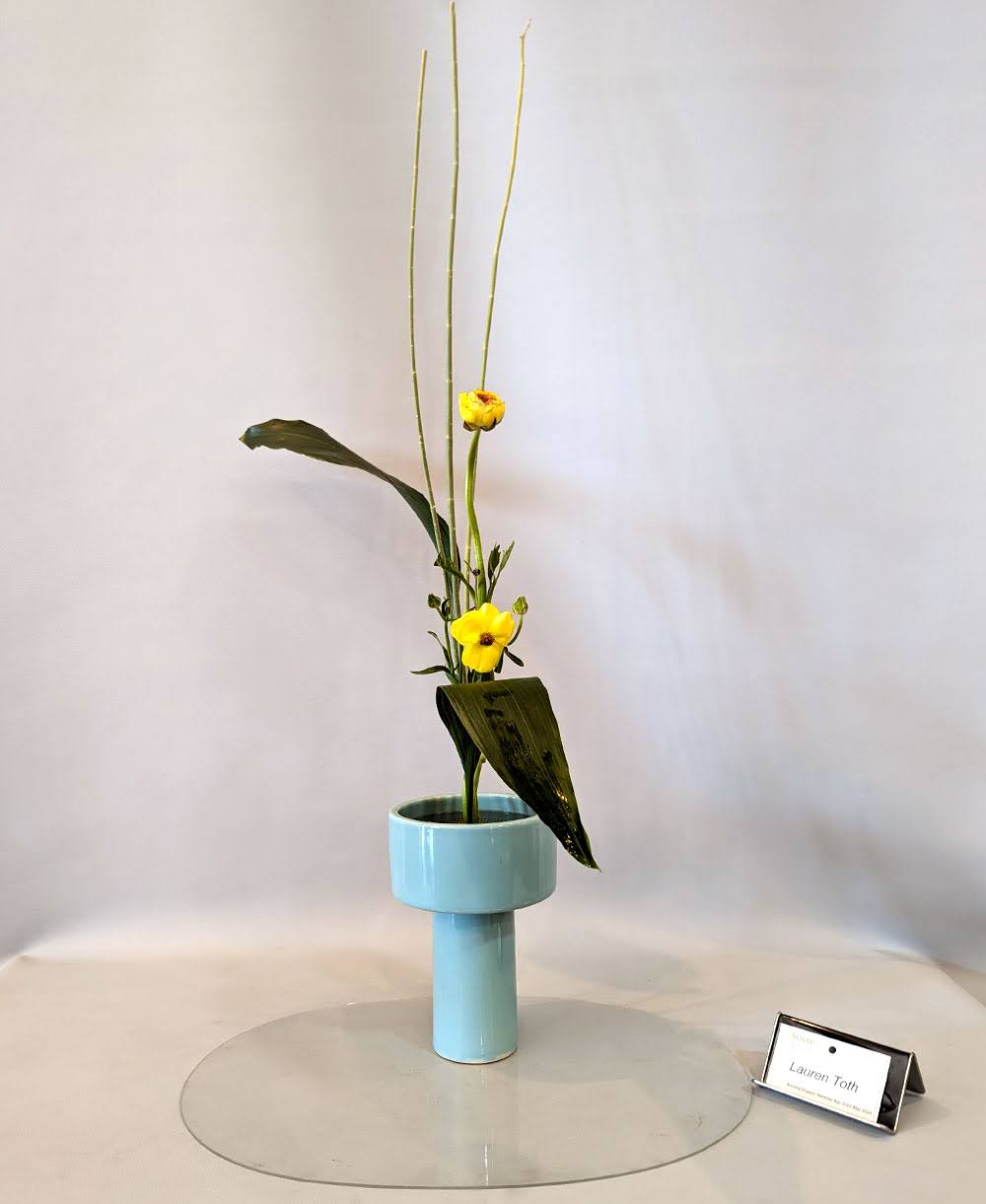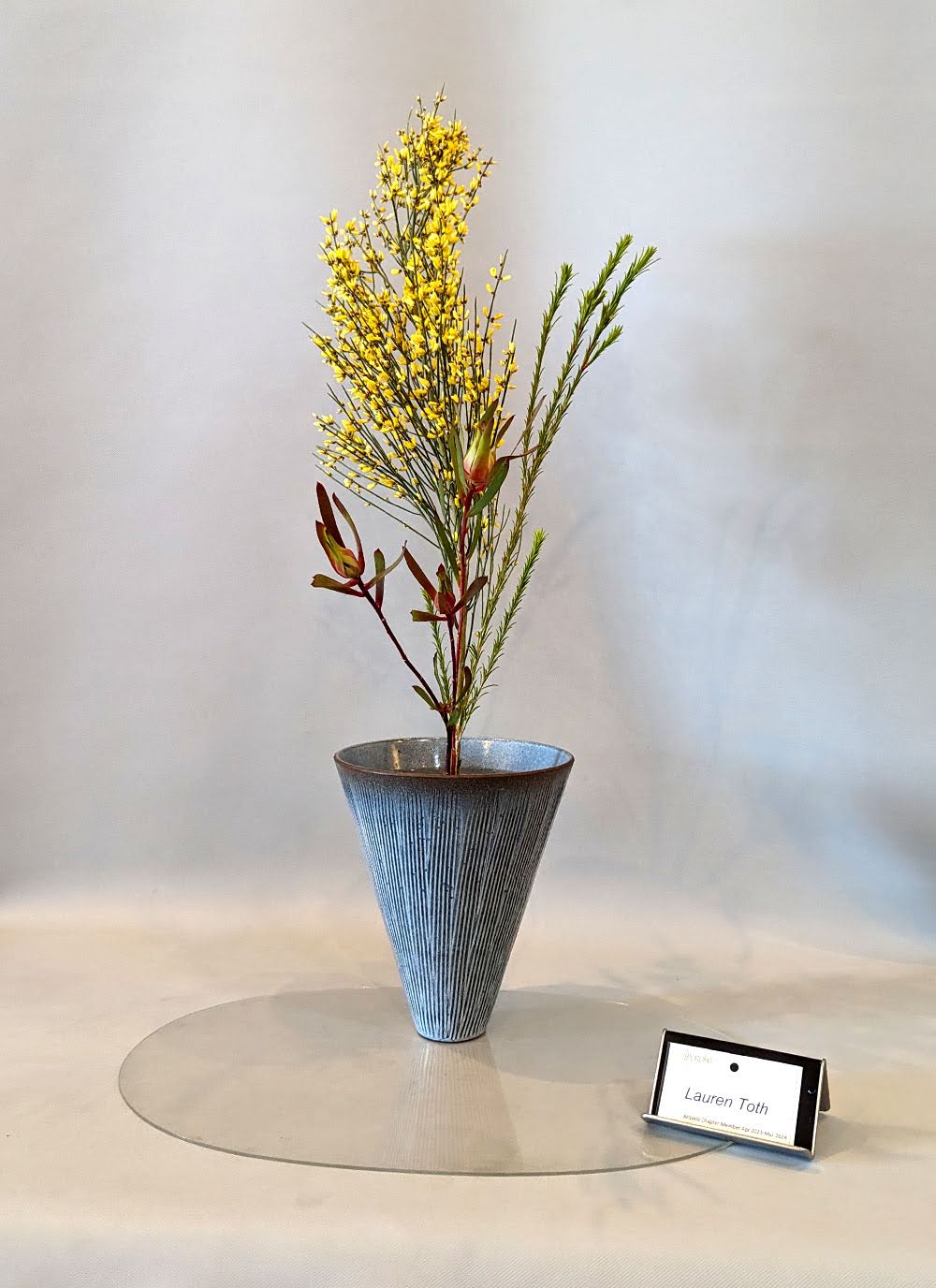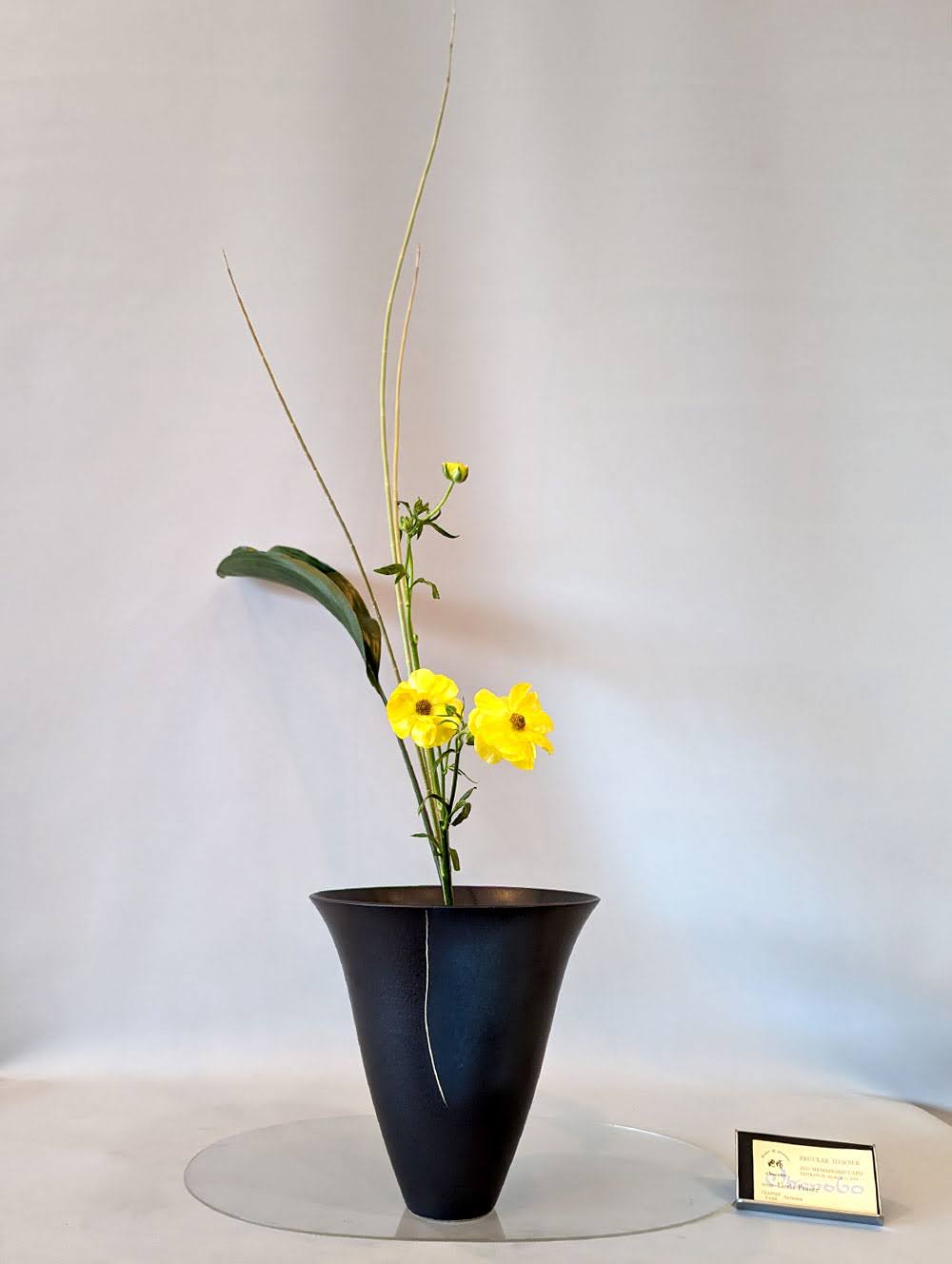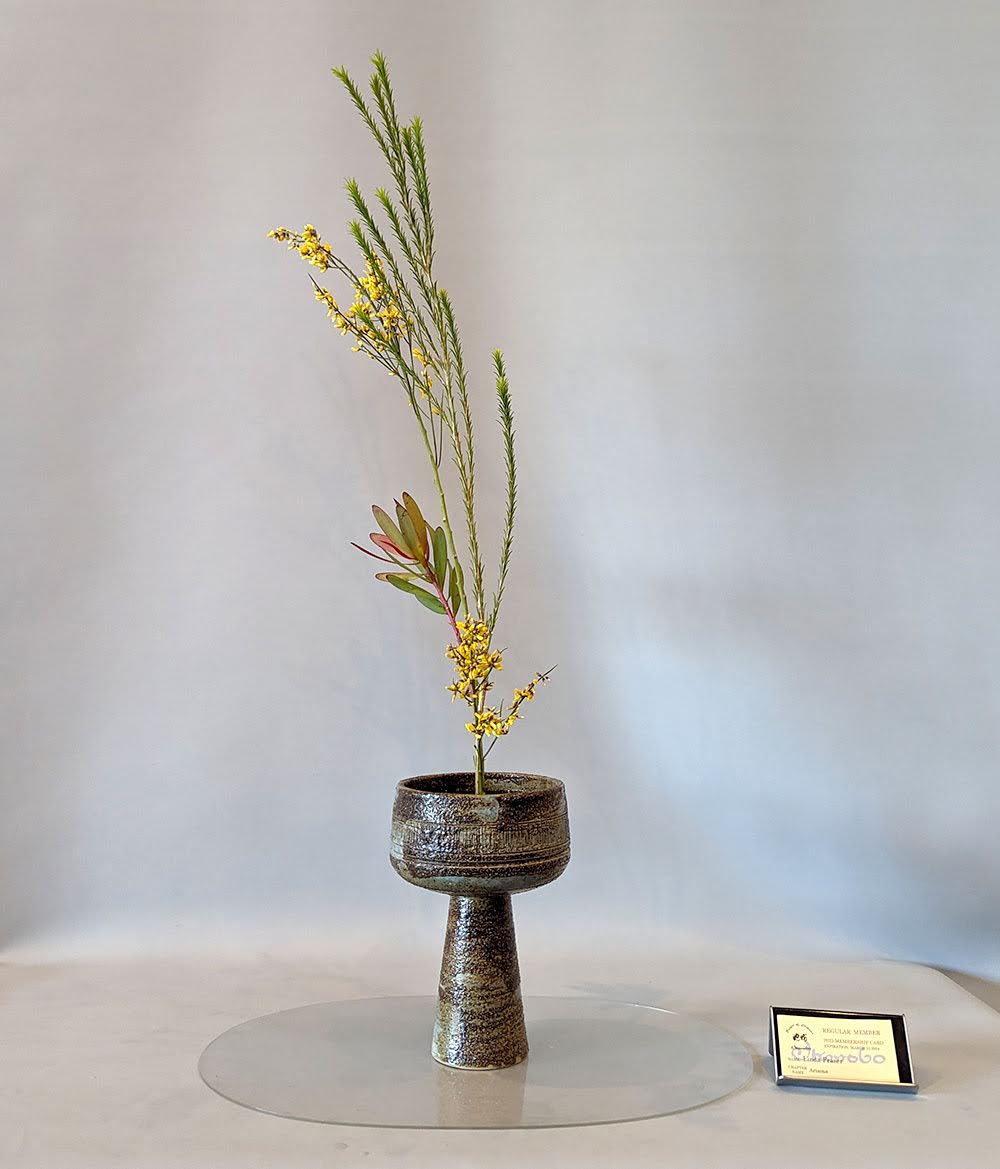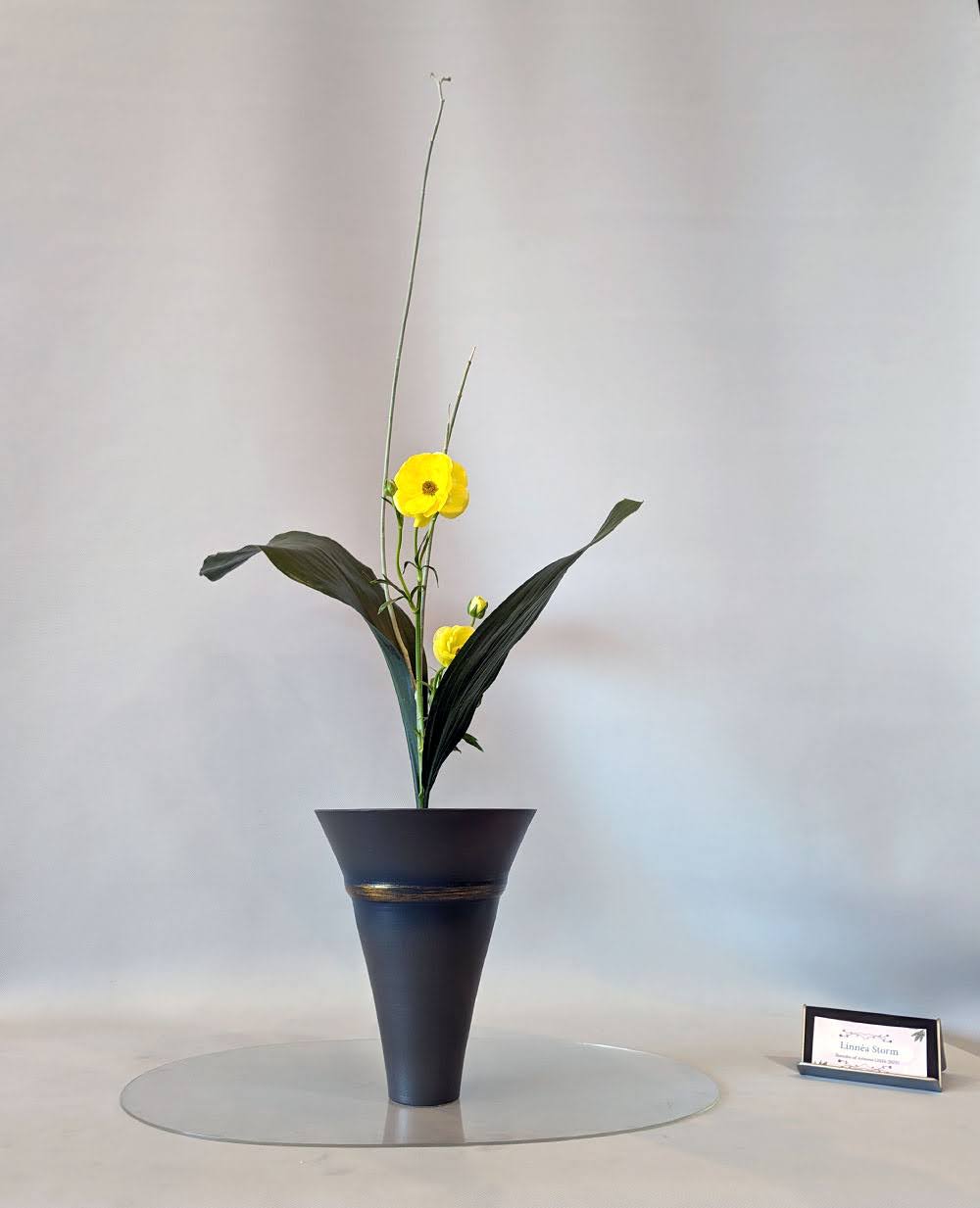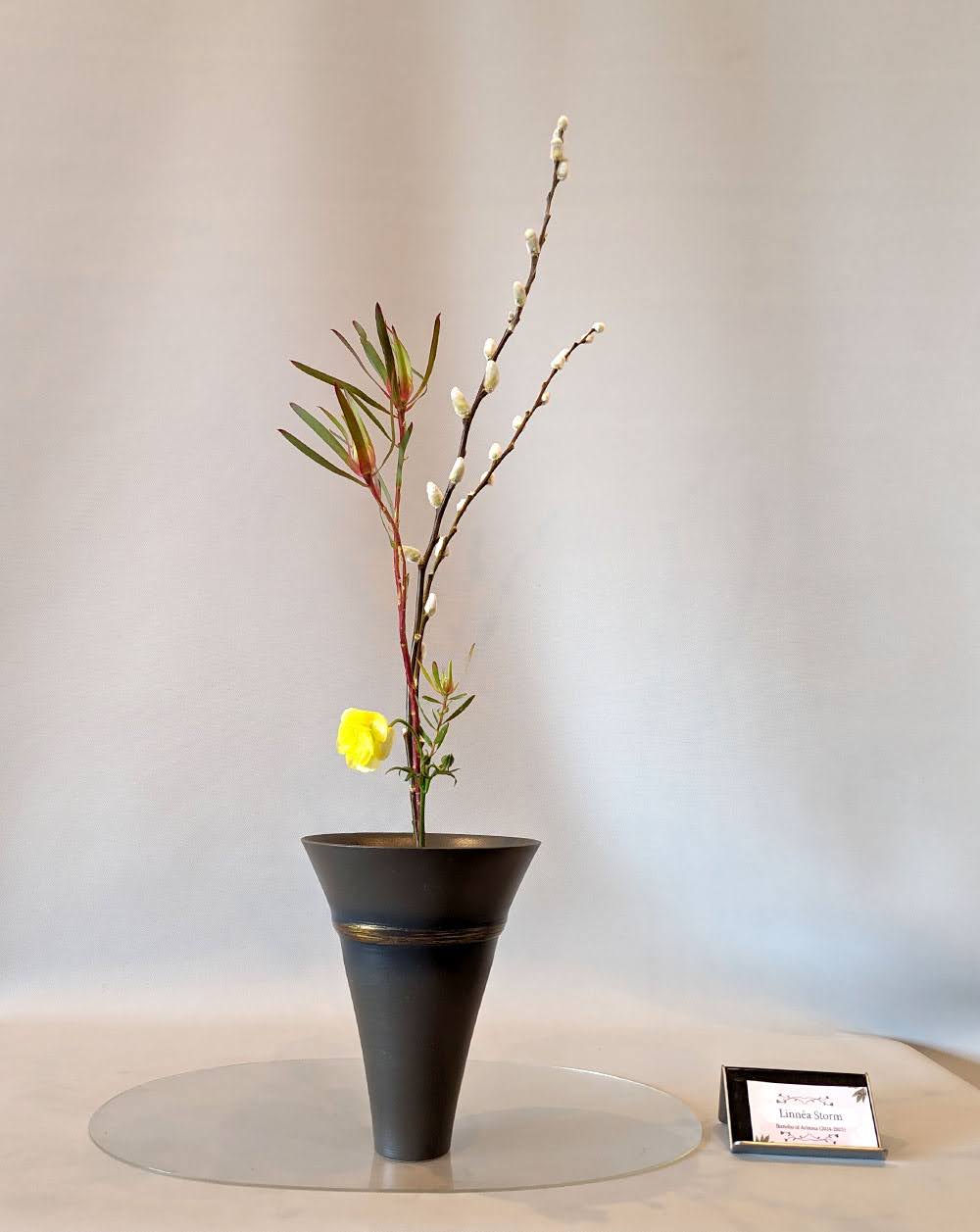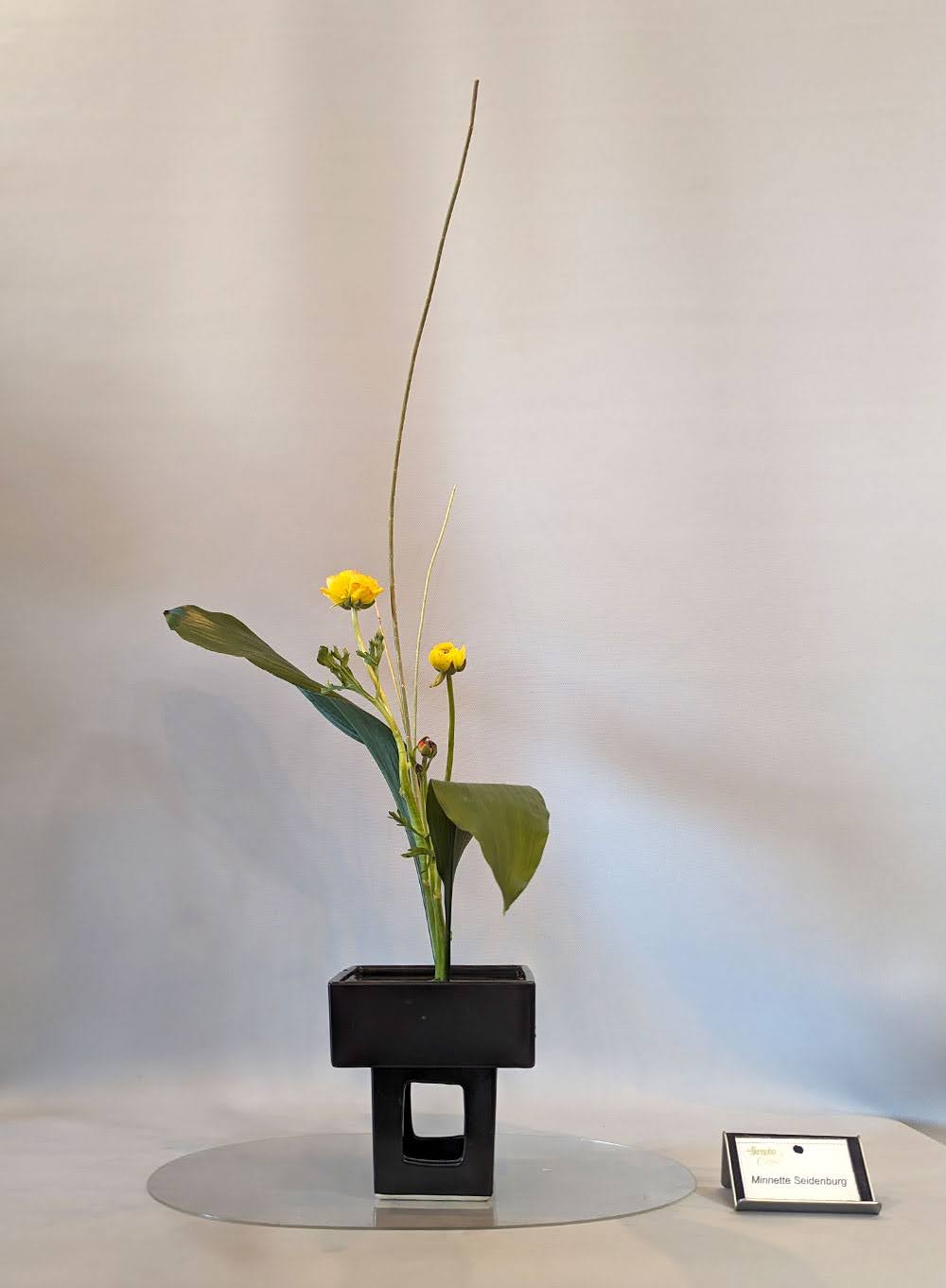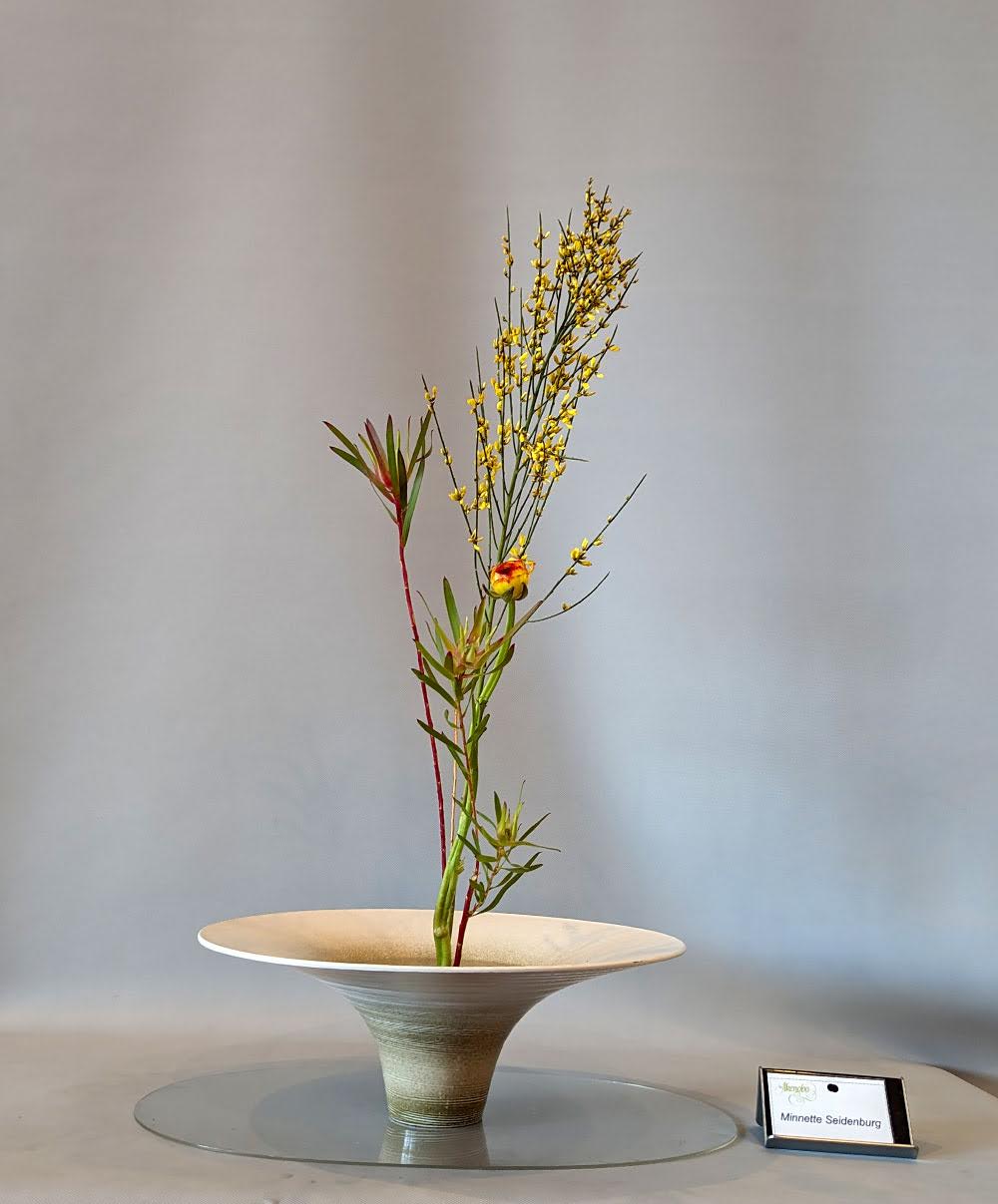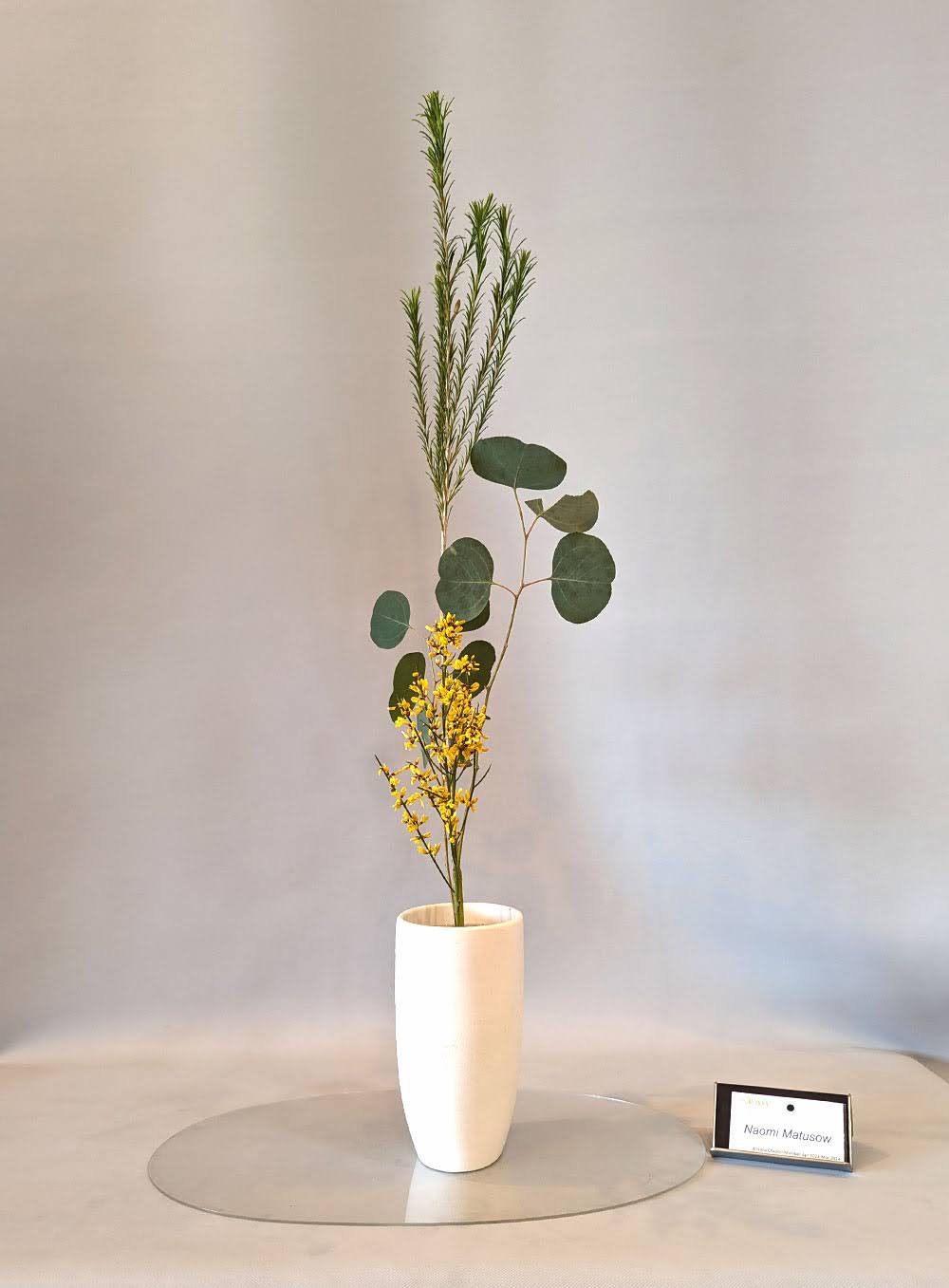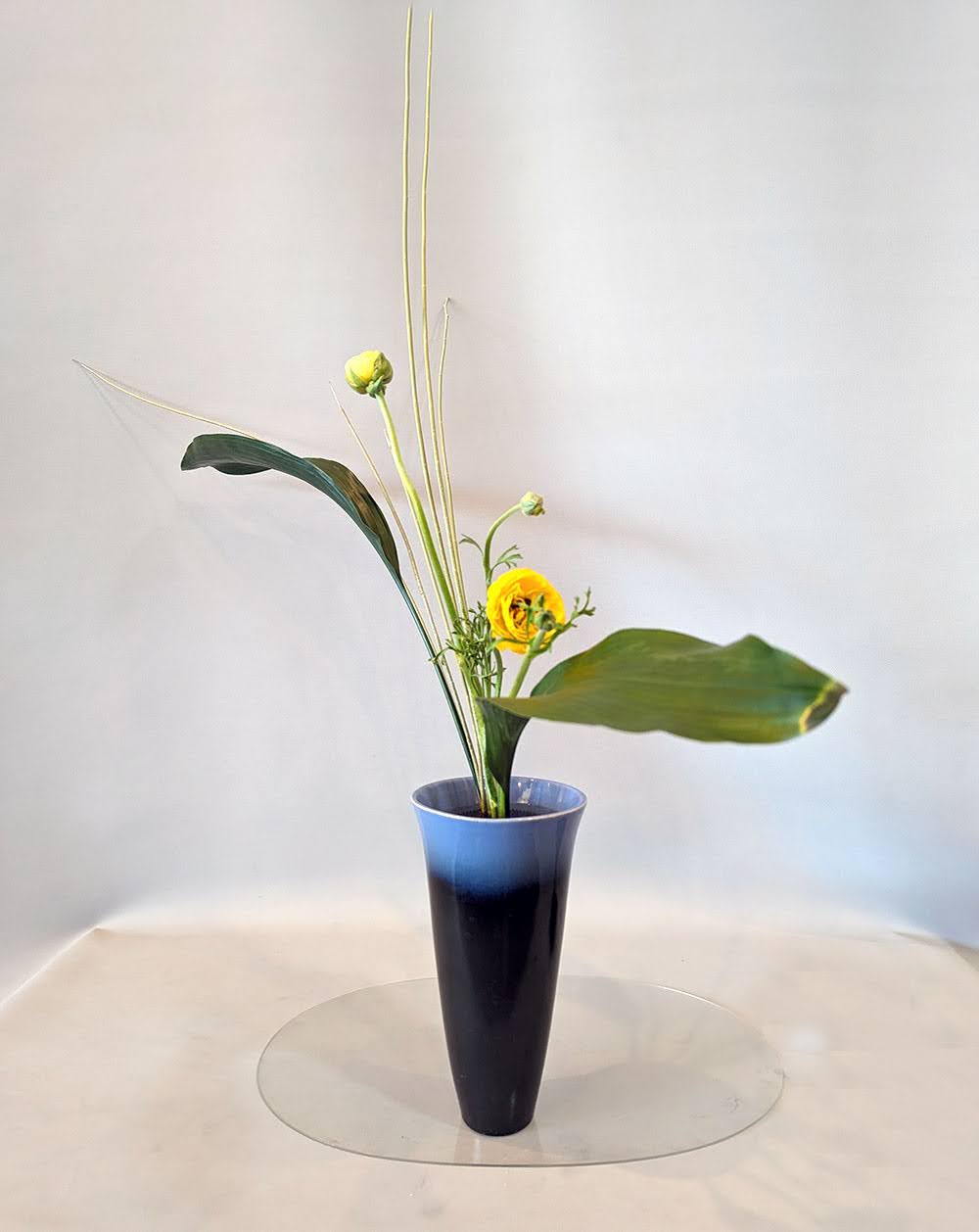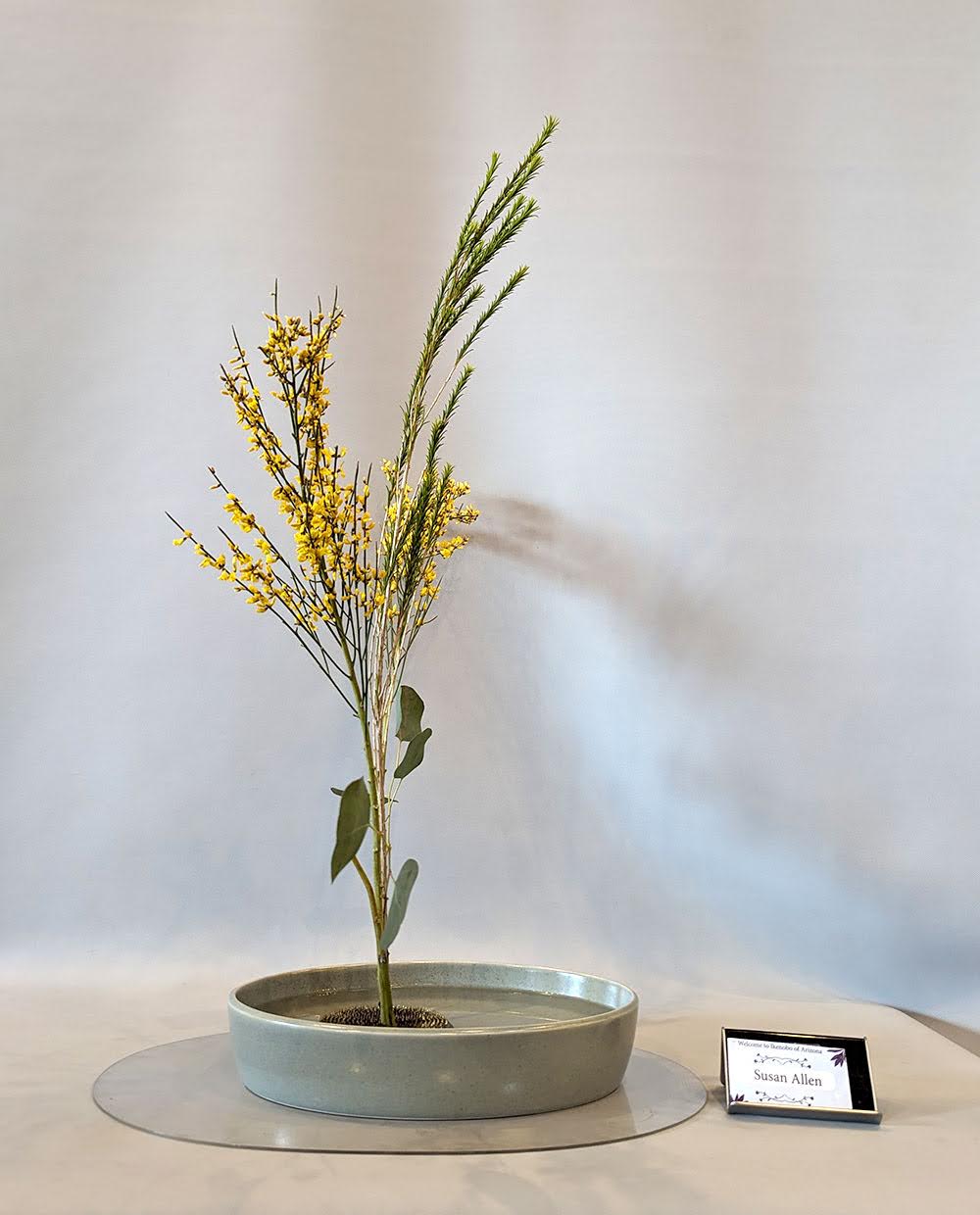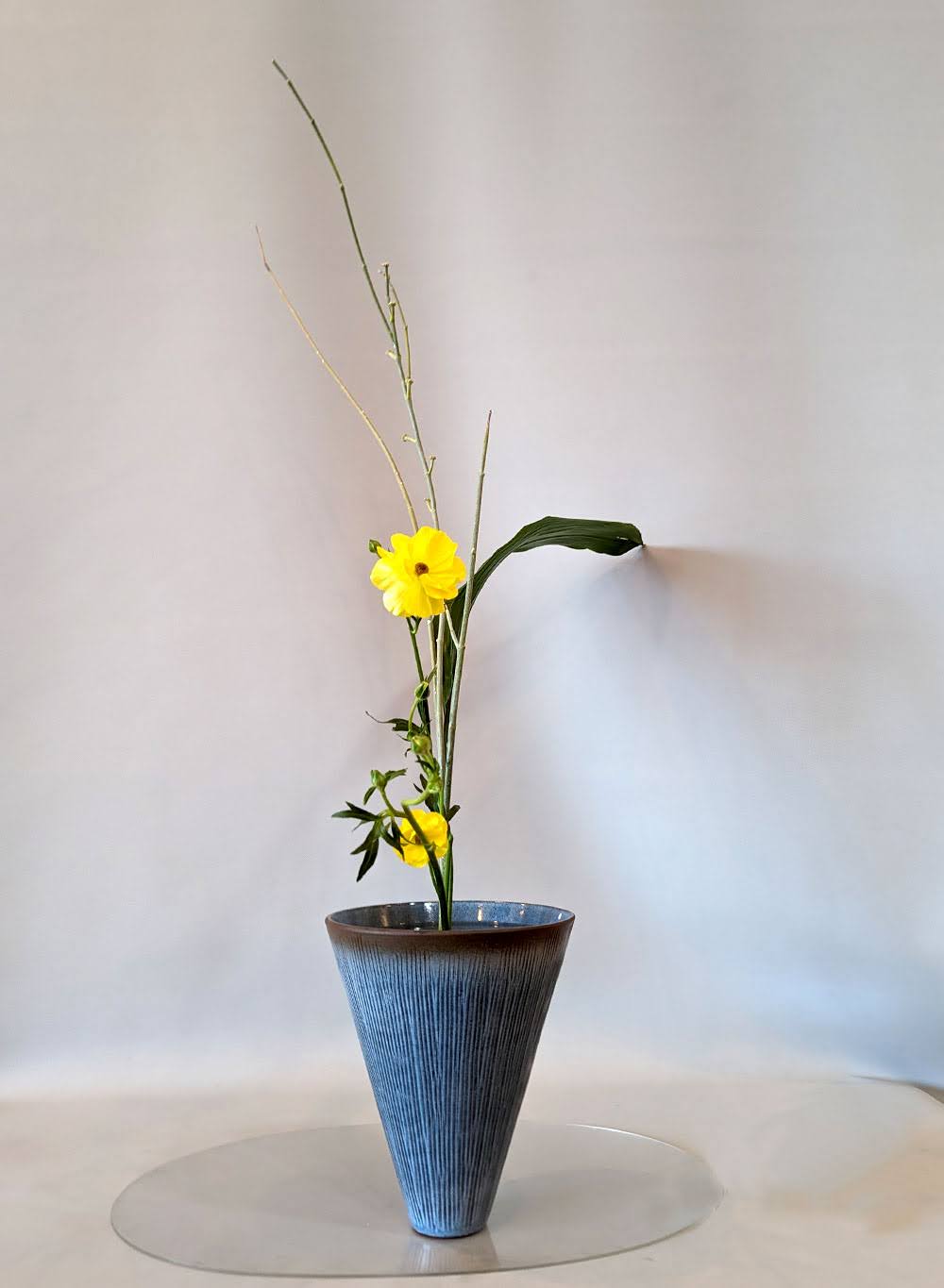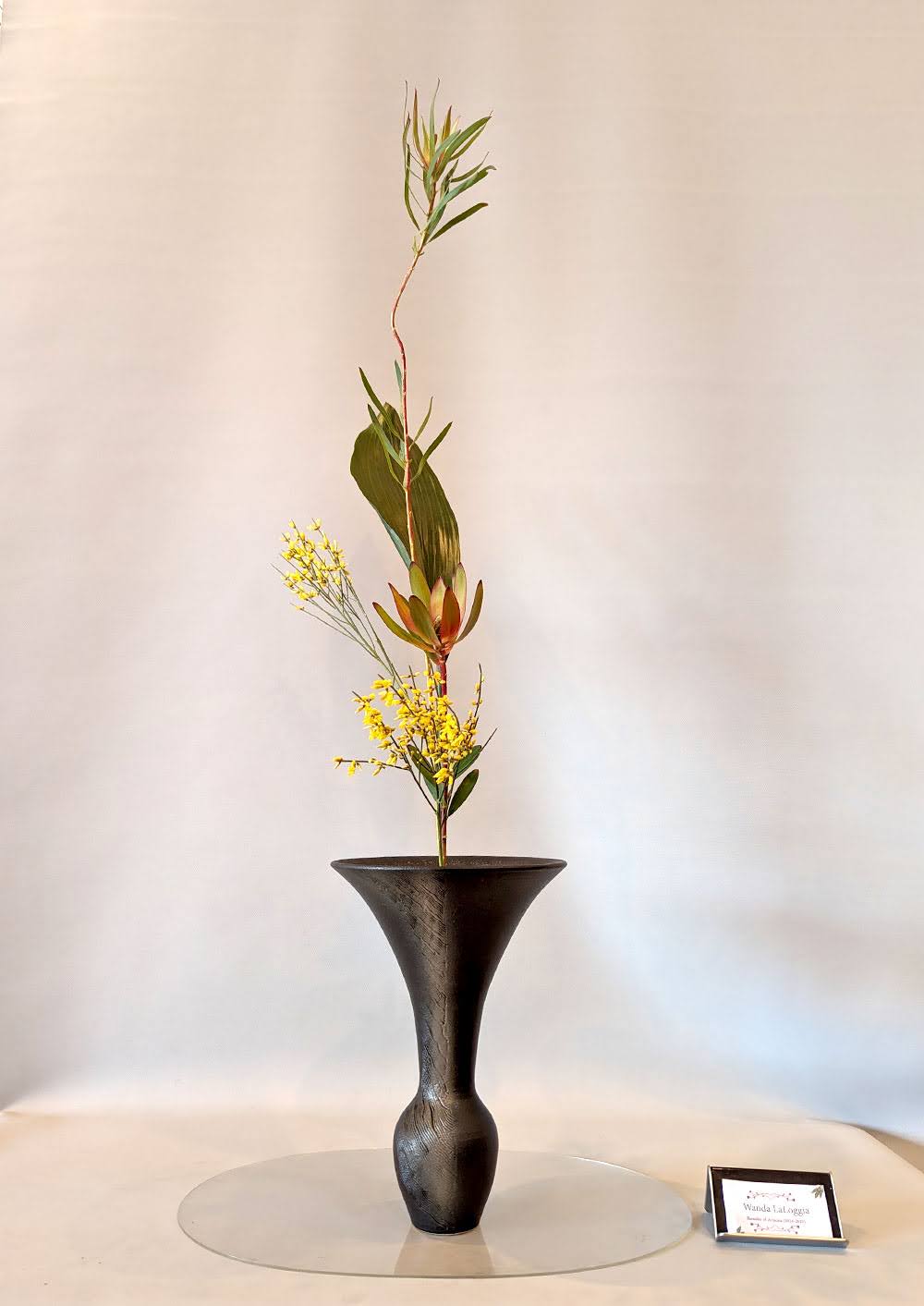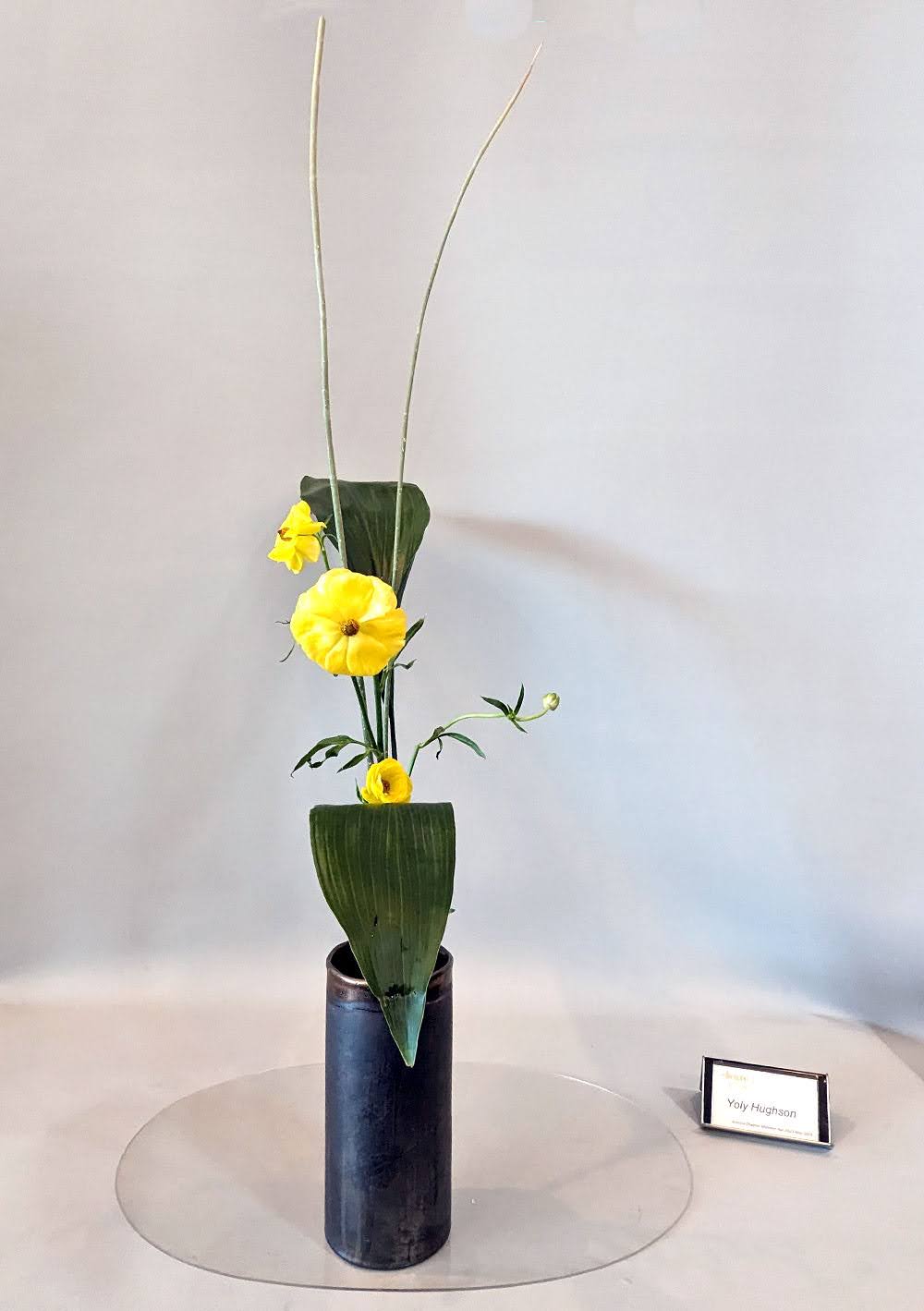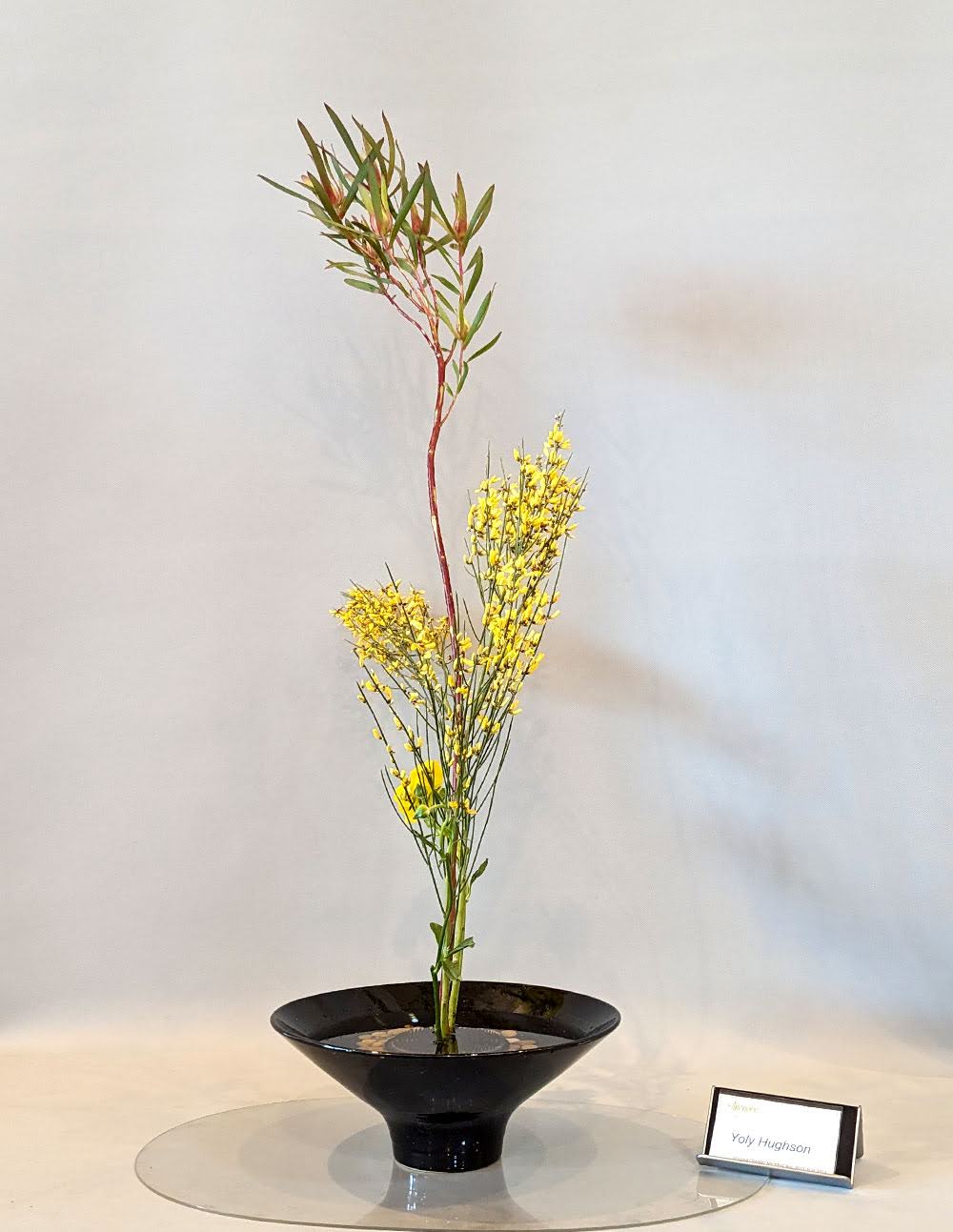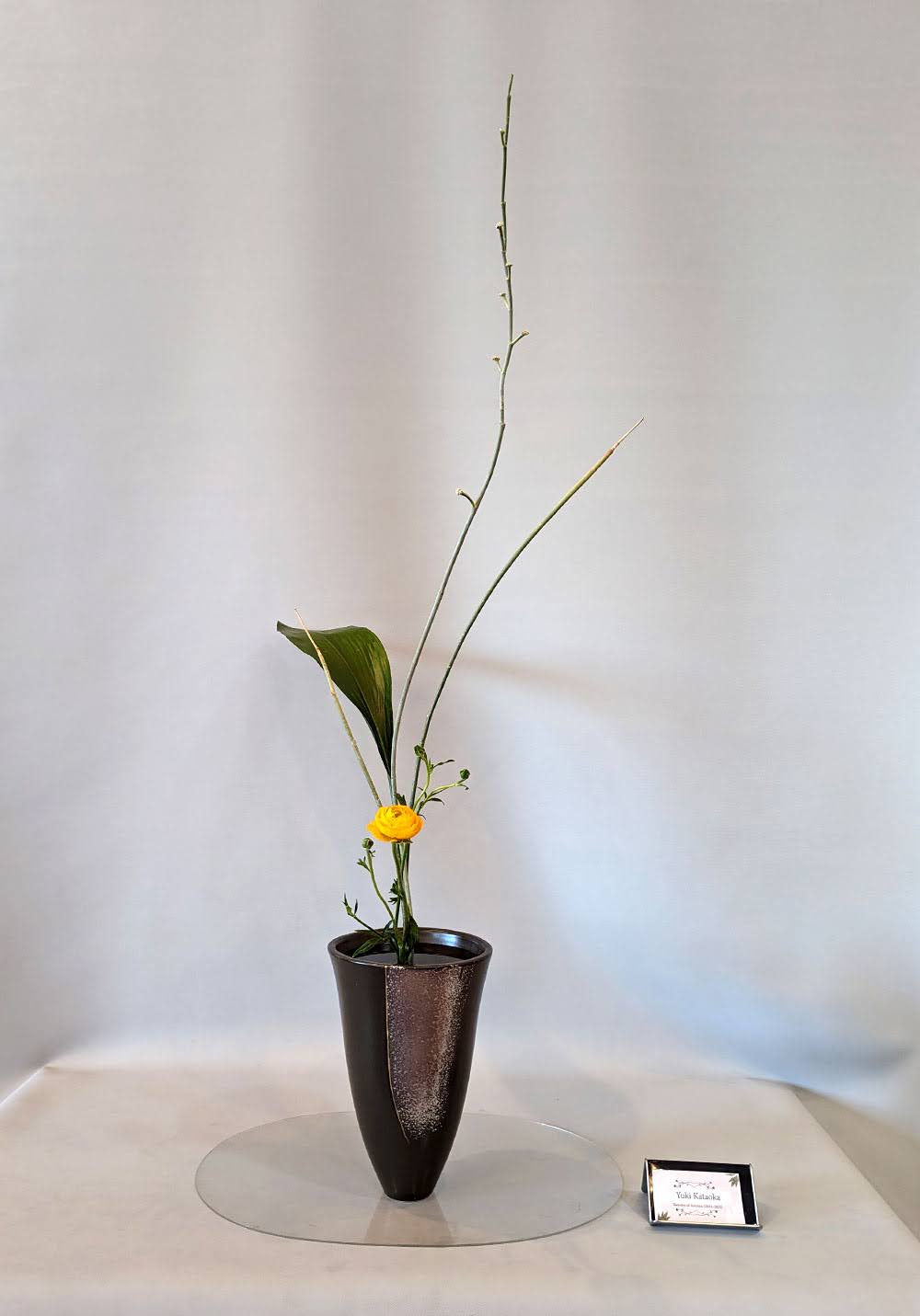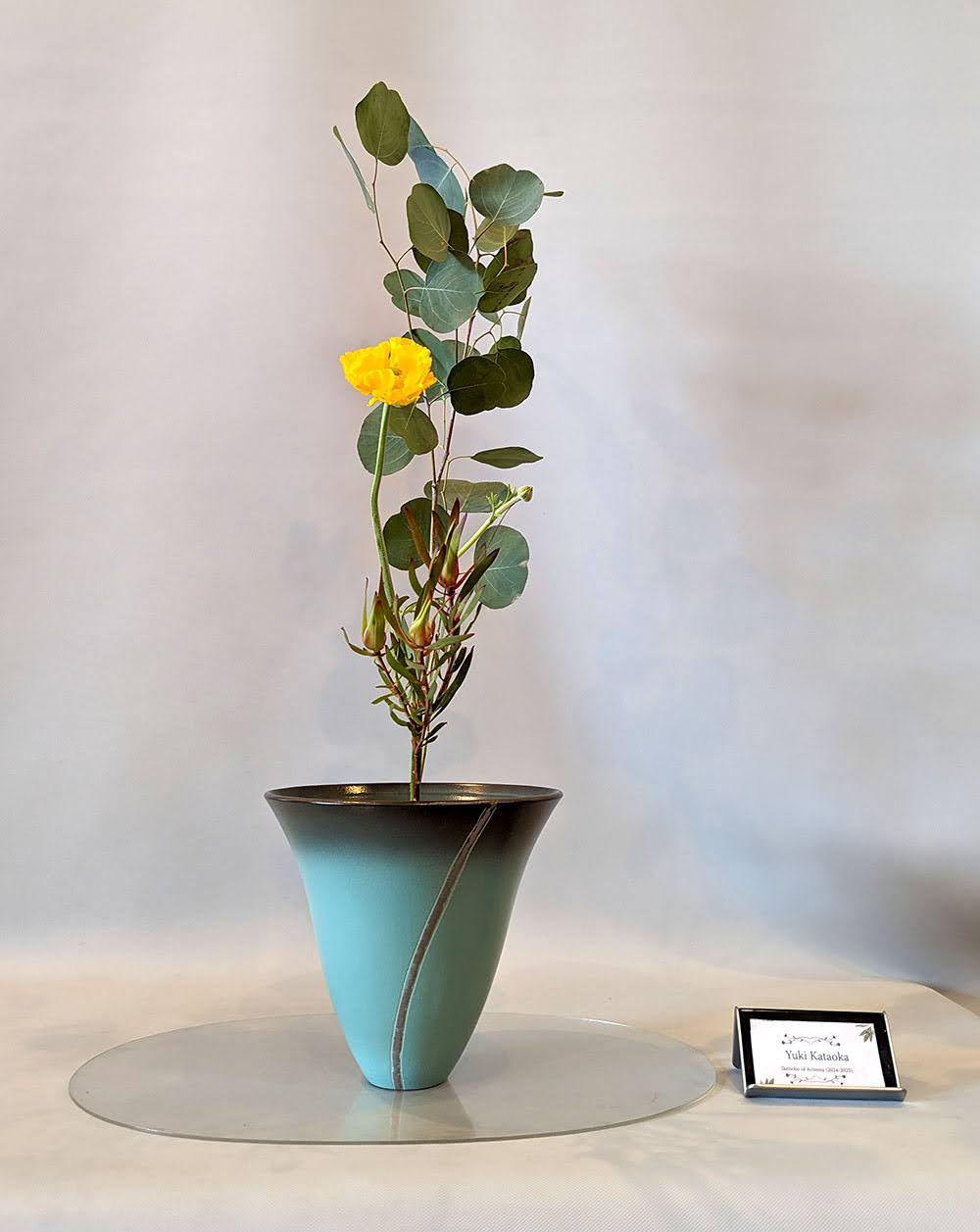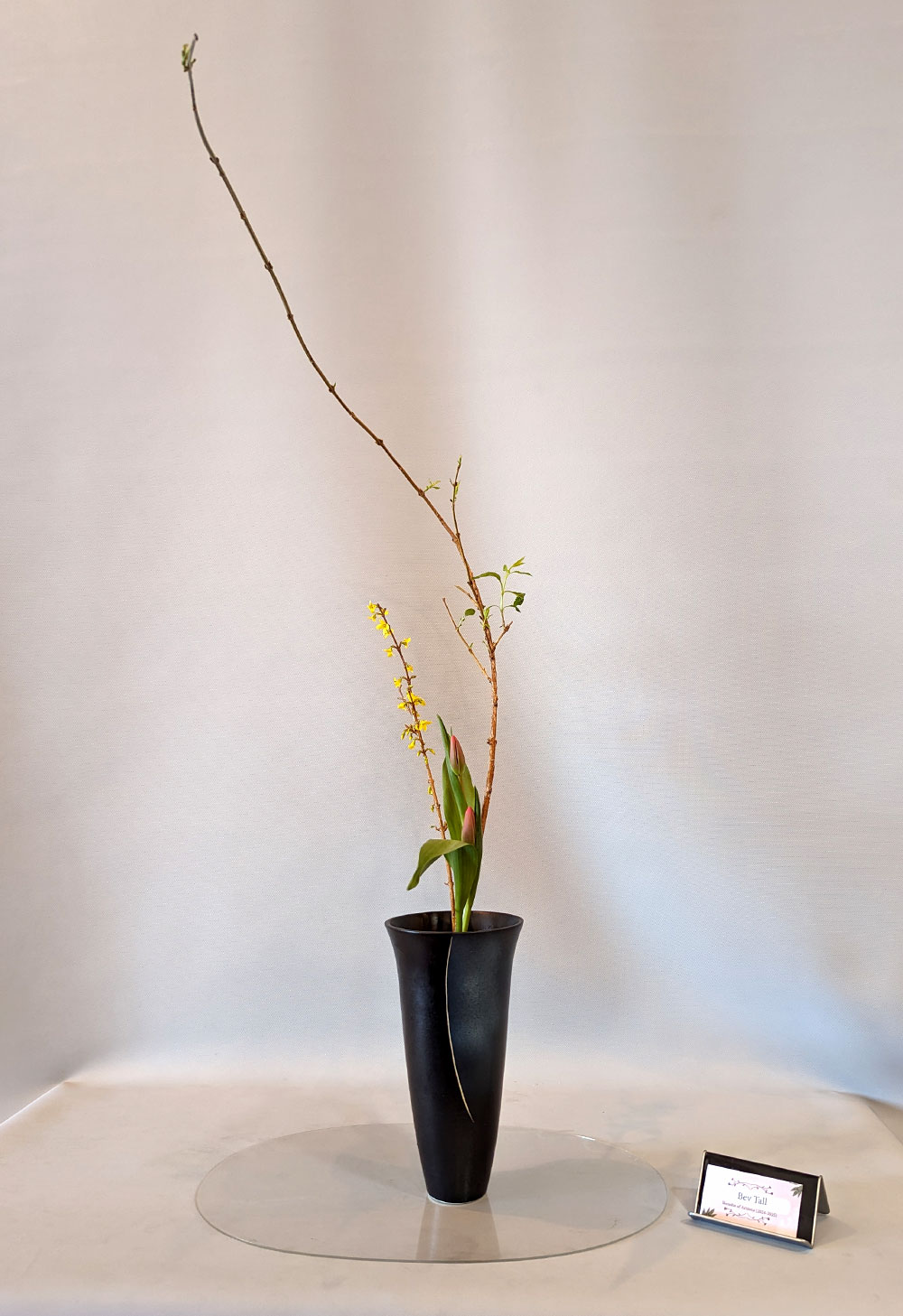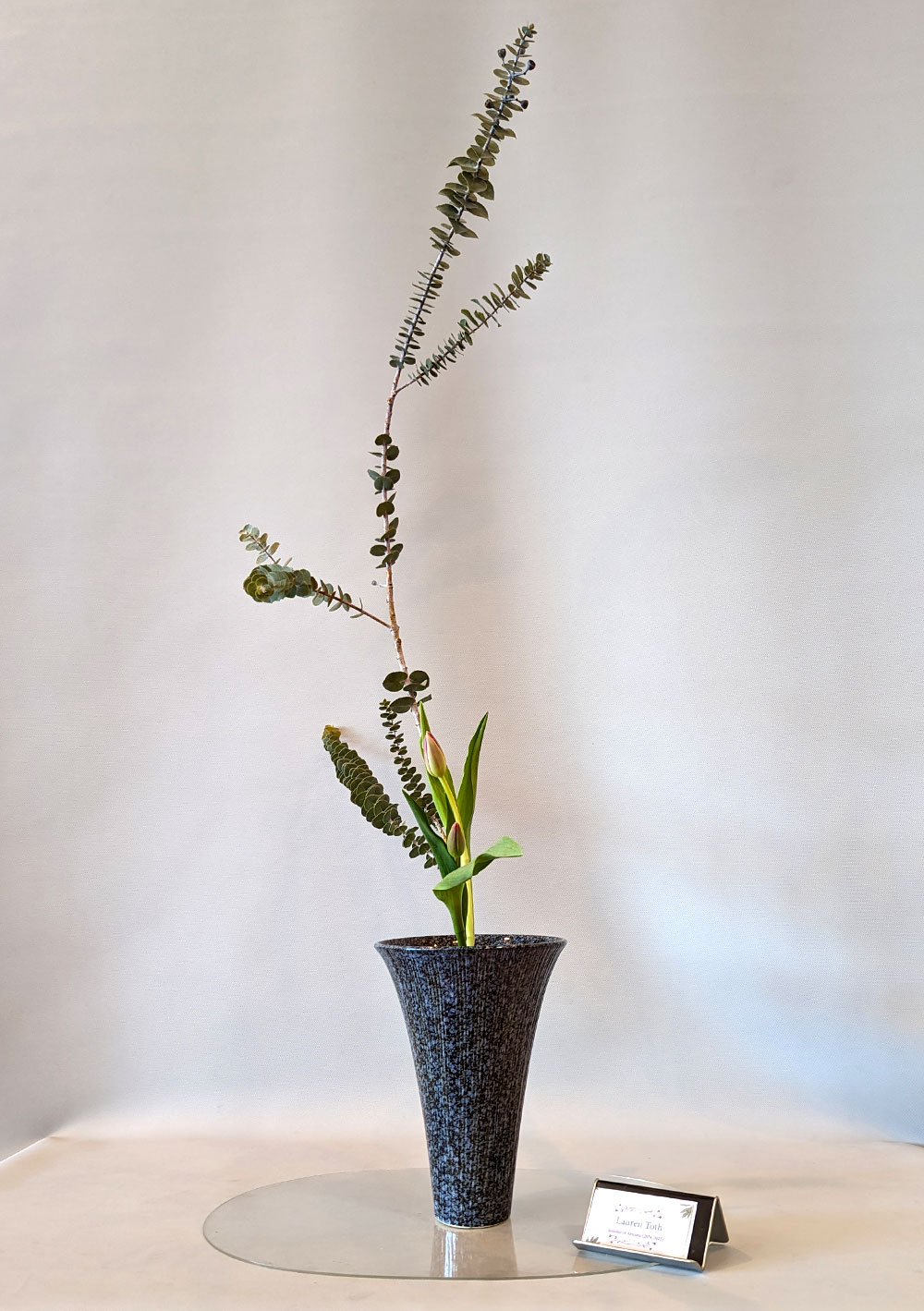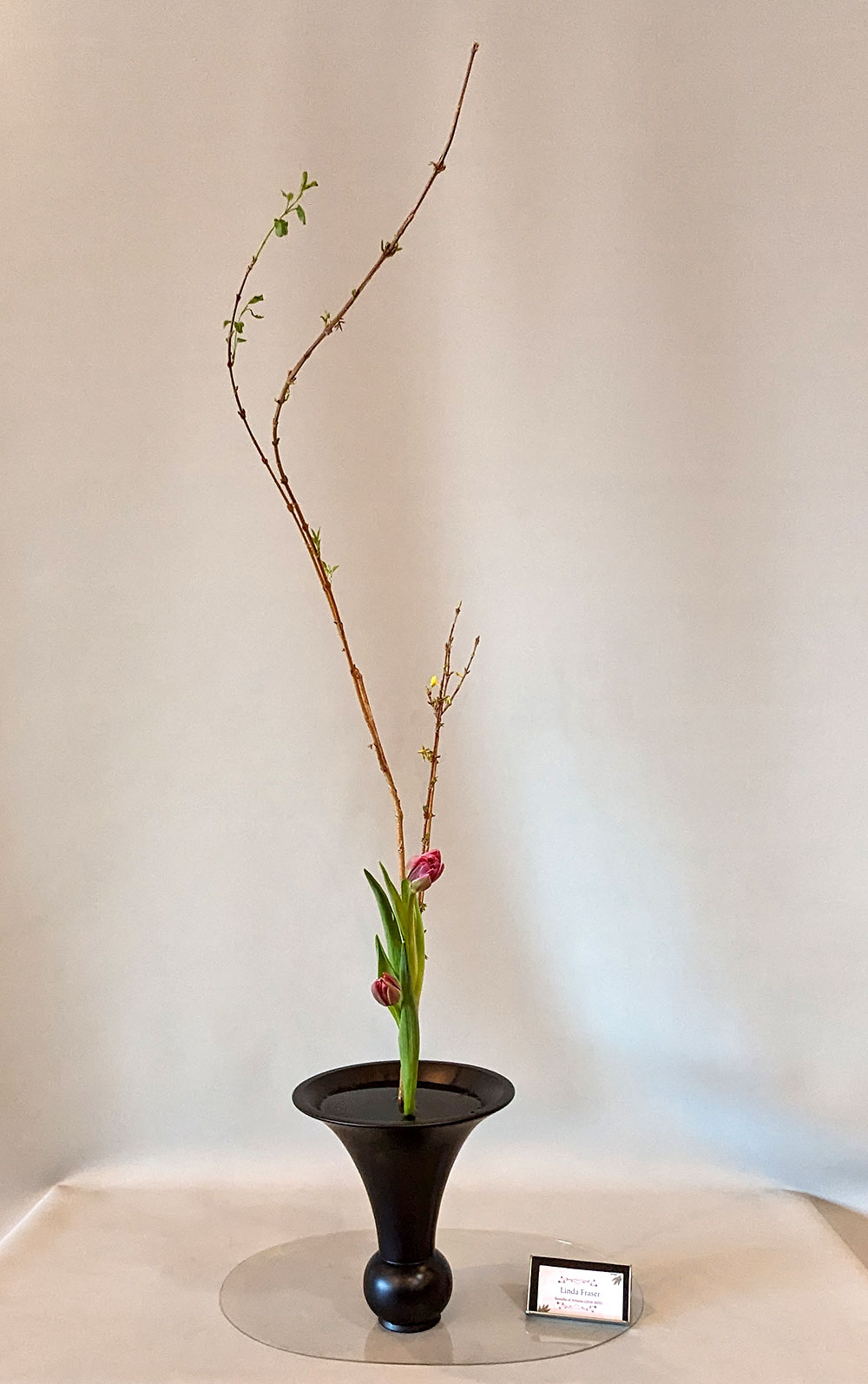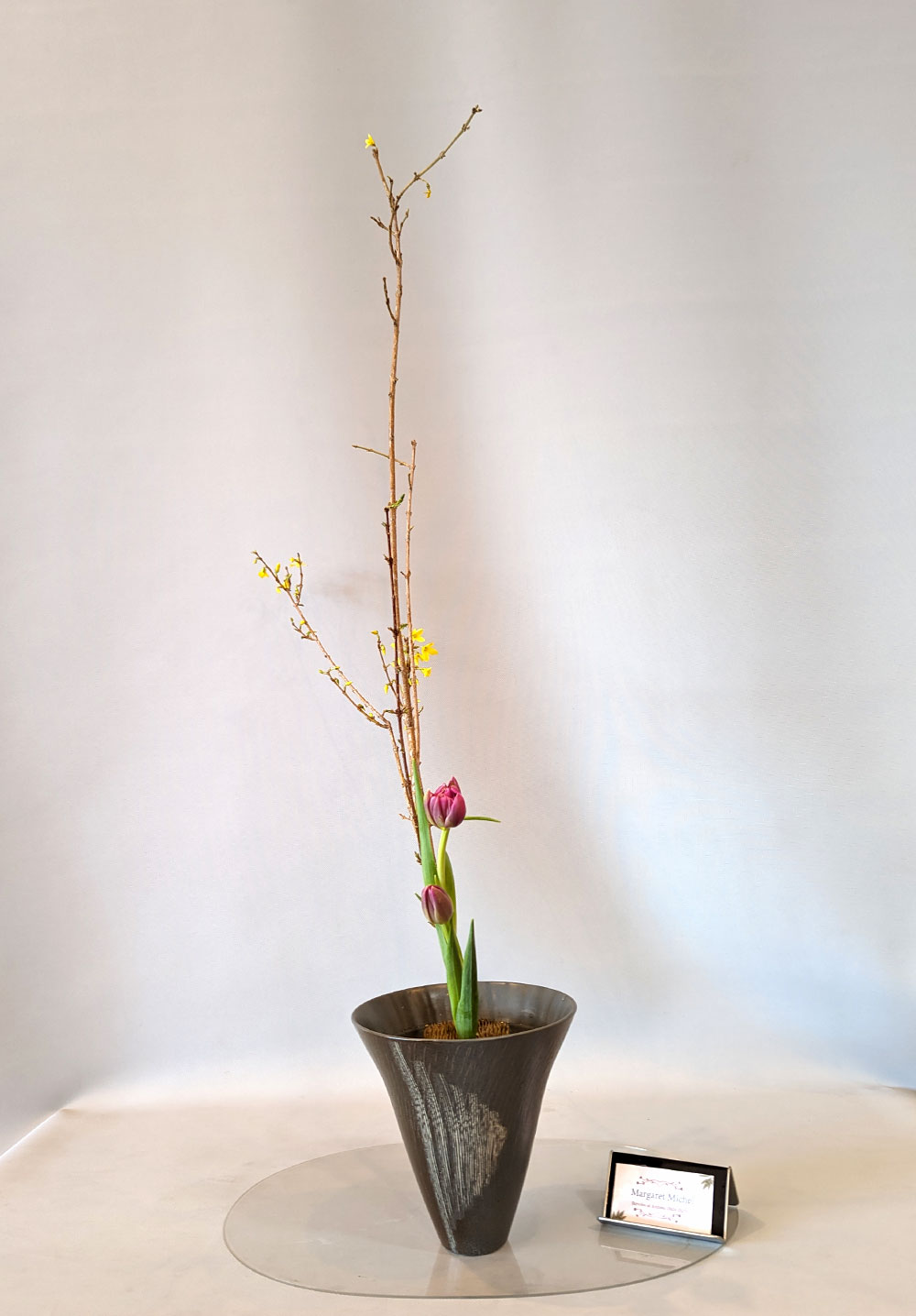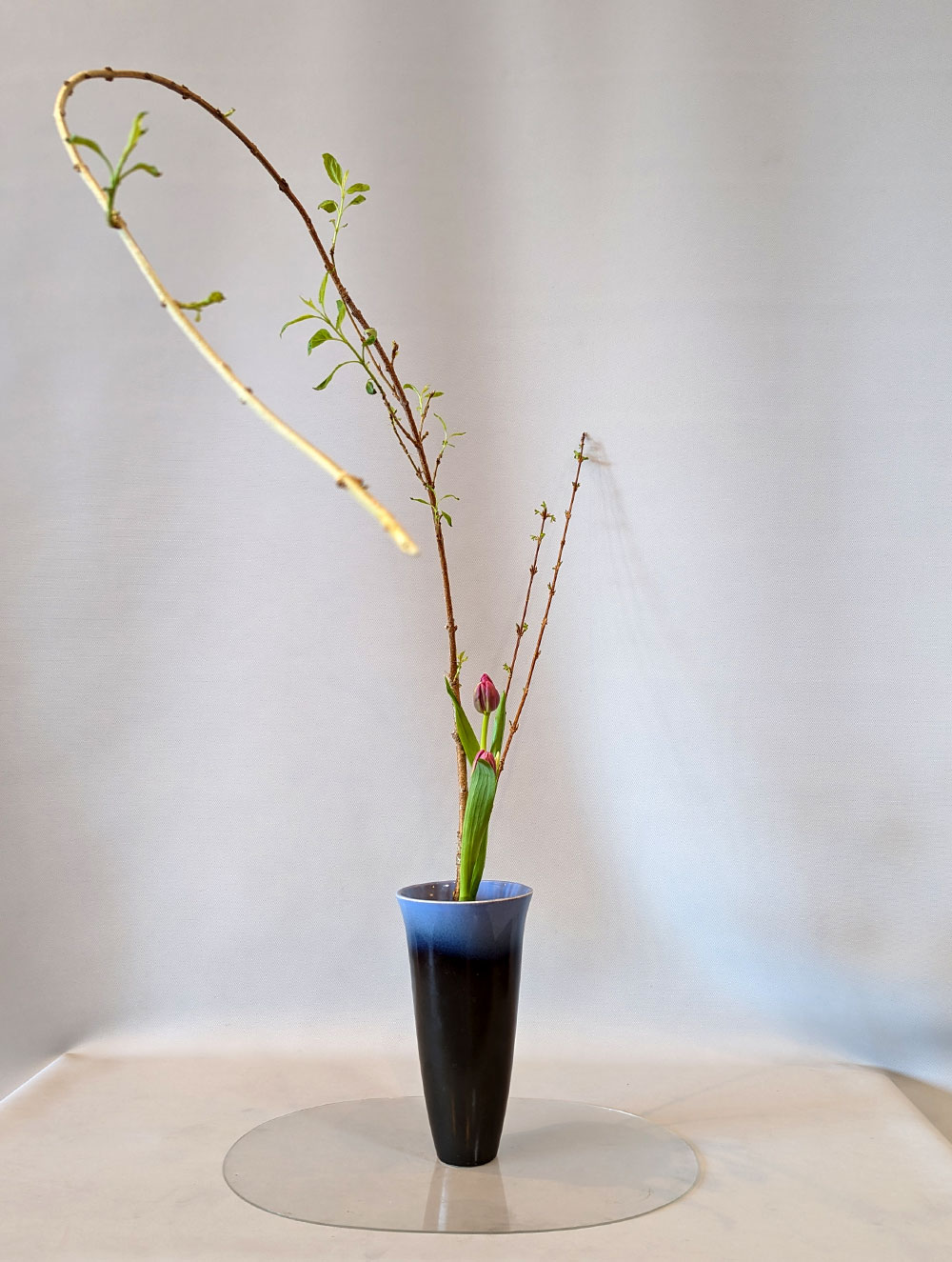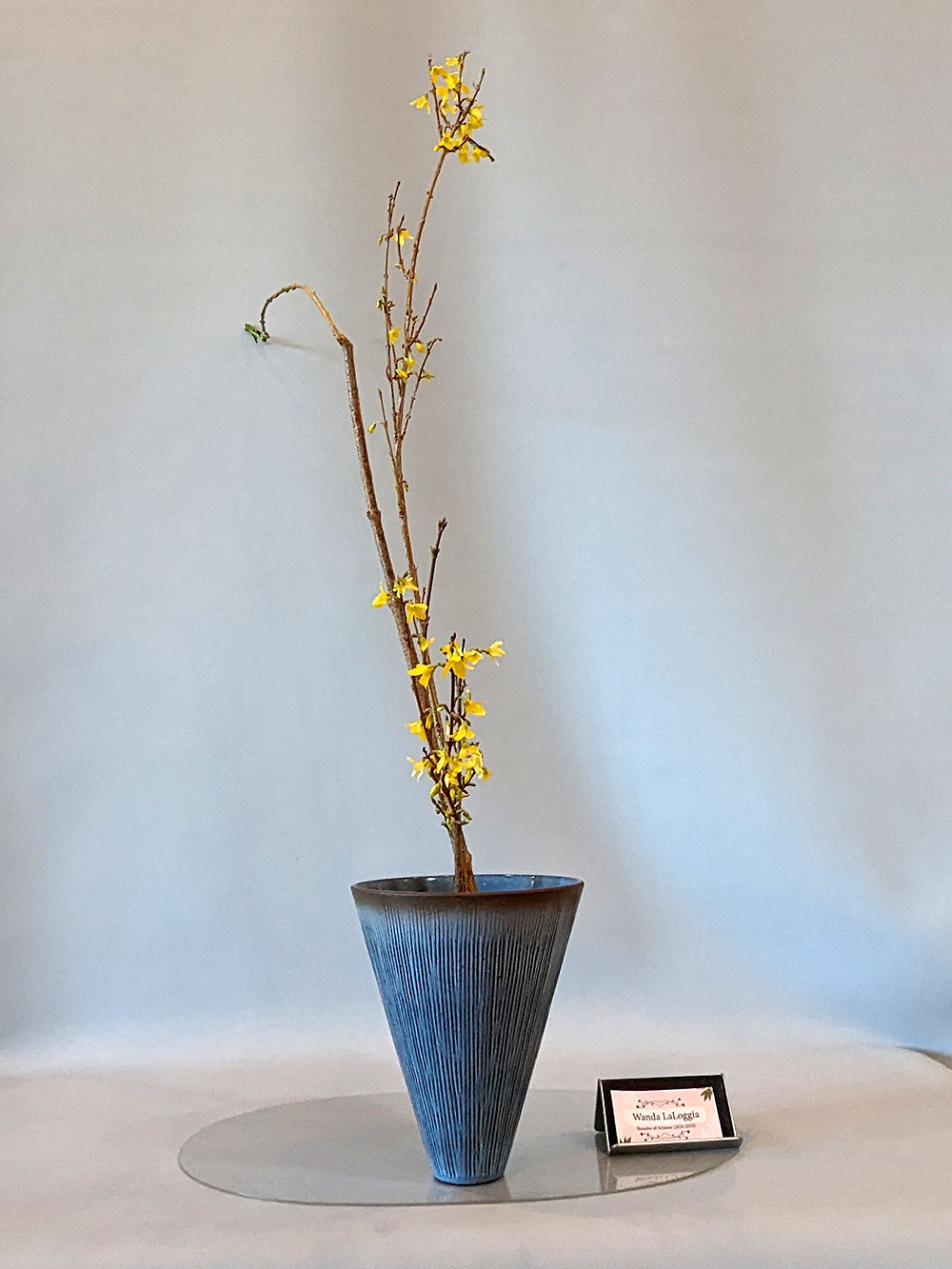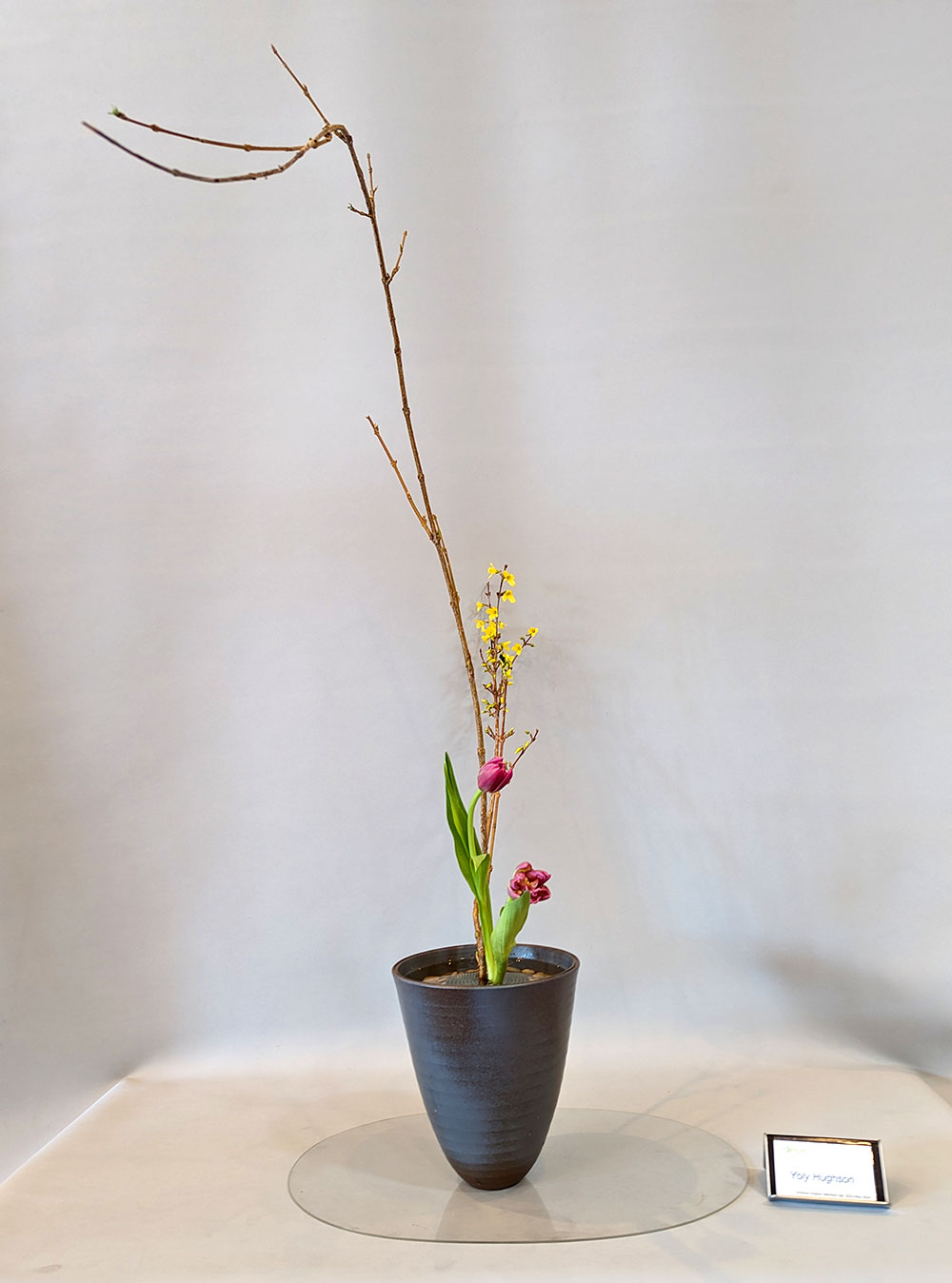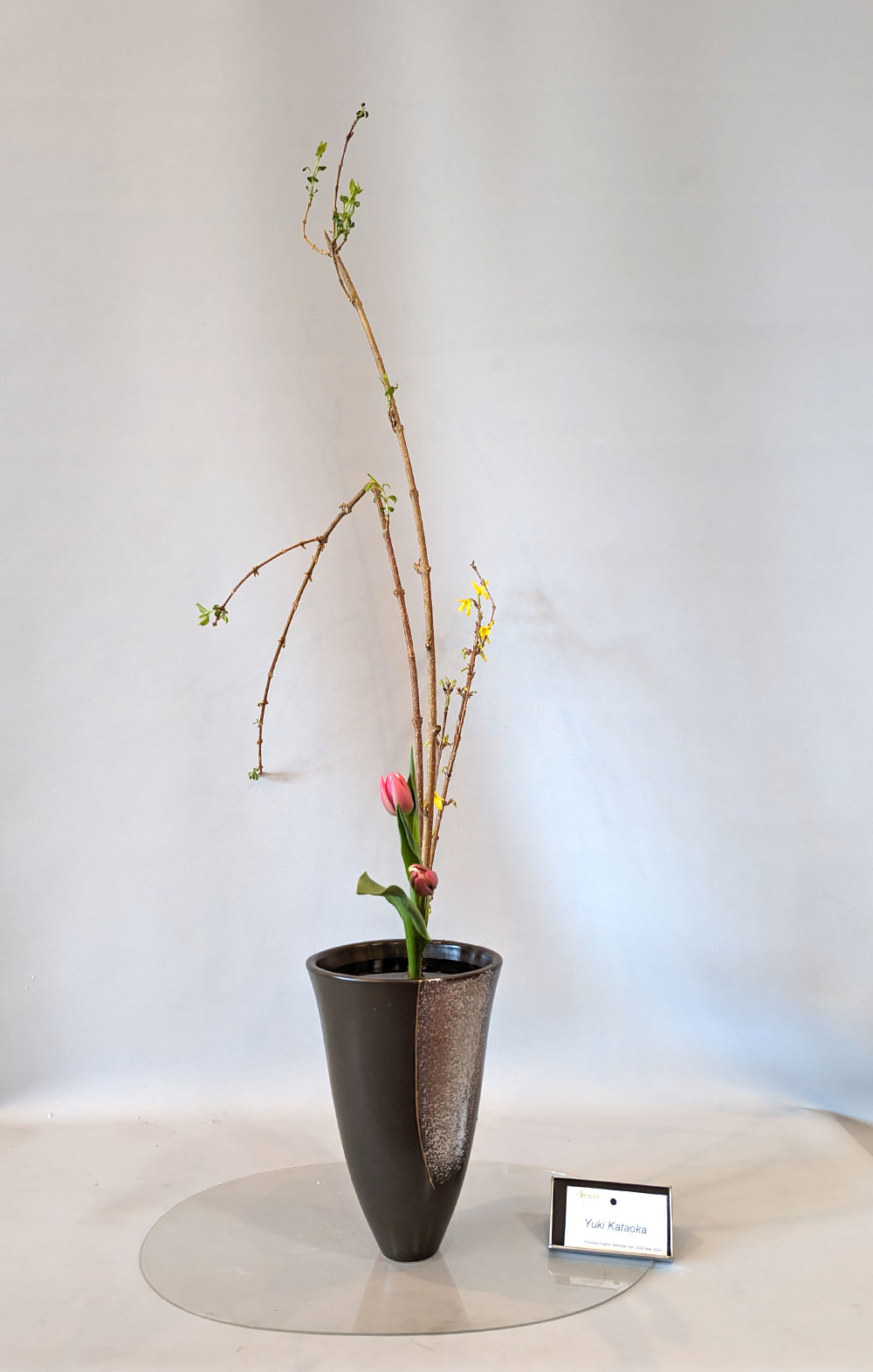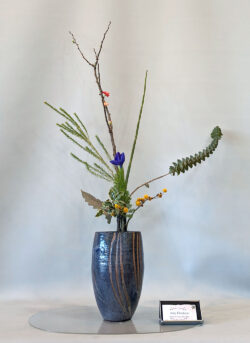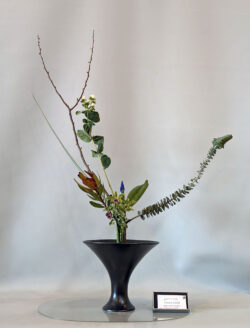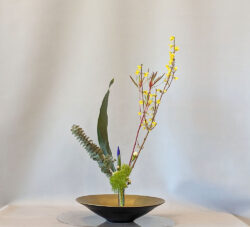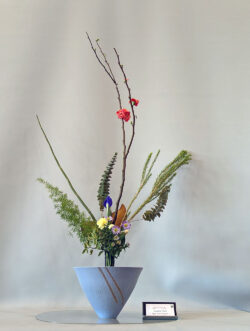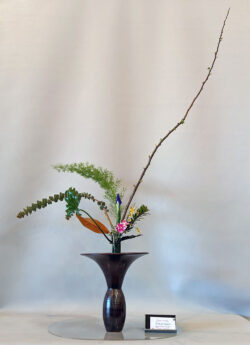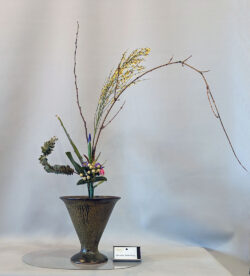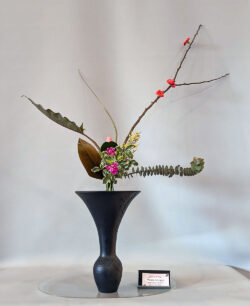Our visiting professor for February 21, 22, and 23 was the extraordinary Emiko Suzuki sensei. She is a native of Japan but has lived in North Carolina for the past 14 years. For us English-speaking participants, this was a real blessing. No translator was needed, and she could explain the cultural differences between the Japanese and Americans, giving us an even better idea of ikebana.
Suzuki sensei taught four workshops…shoka sanshuike, shoka shimputai, shoka sanshuike sandan nagashi and rikka shimputai.
Shoka Sanshuike and Shoka Shimputai
Emiko-sensei commenced the lesson by revisiting the foundational principles of Shoka. The journey began with the Shoka Isshuike, where the singular focus on one plant material allows a deep appreciation of its inherent beauty. As we progressed to the Shoka Nishuike, Emiko-sensei explained the concept of combining contrasting materials to support and enhance a lighter material and strategically placing woody materials behind grassy elements to enhance visual impact. Finally, we progressed to the shoka sanshuike, a much freer arrangement using three materials. Emiko-sensei's guidance was invaluable as she shared techniques for blending woody and grassy materials in the kenzan, ensuring a seamless fusion of elements. She emphasized the importance of maintaining proper proportions, ensuring that the height of the kenzan remains precisely 2 cm from the rim of the vase. To aid us in this endeavor, she introduced a homemade "Ikenobo magic stick," a tool that quickly became indispensable in achieving the desired height. Such was its popularity that eager students swiftly snapped up the four available sticks. (We will have more available for chapter members in the future.)
Next, we changed hats and created the more modern shoka shimputai. While still grounded in the fundamental principles of Ikebana, such as respect for nature and balance, Shoka Shimputai offers a departure from conventional patterns.
Shoka with nagashi line
On Thursday, Emiko sensei explained how to use a nagashi line in our shoka arrangements. Derived from the Japanese word for “flowing”, nagashi brings a dynamic element to floral compositions, enriching them with movement and grace. The nagashi line has three key variations: Jodan (high), Chudan (middle), and Gedan (low). Among these, the Jodan nagashi line is more common.
Rikka Shimputai
The Rikka Shimputai proved to be a challenge for participants. We discovered that it demands skill and a keen understanding of materials and aesthetics. We learned that we need to use a diverse array of materials. A minimum of 10 different types of materials is recommended. However, mere quantity is not the sole criterion; the quality and essence of the materials play a pivotal role. It is advised to incorporate garden-fresh or native materials to imbue the arrangement with an authentic and organic feel. The essence of Rikka Shimputai lies in attention to four key components encapsulated by the acronym BSDD: Brightness, Sharpness, Distinctiveness, and Drama. These elements serve as guiding principles, steering the arranger towards achieving harmony and balance in their creation.
Our students rose admirably to the challenge, embodying the essence of BSDD in their creations.
Please check out the photographs for illustrations of these four types of arrangements. Sensei’s ever-present smile and sense of humor made each lesson an event to remember…even the critiques. We certainly hope she will return in the not-too-distant future.


